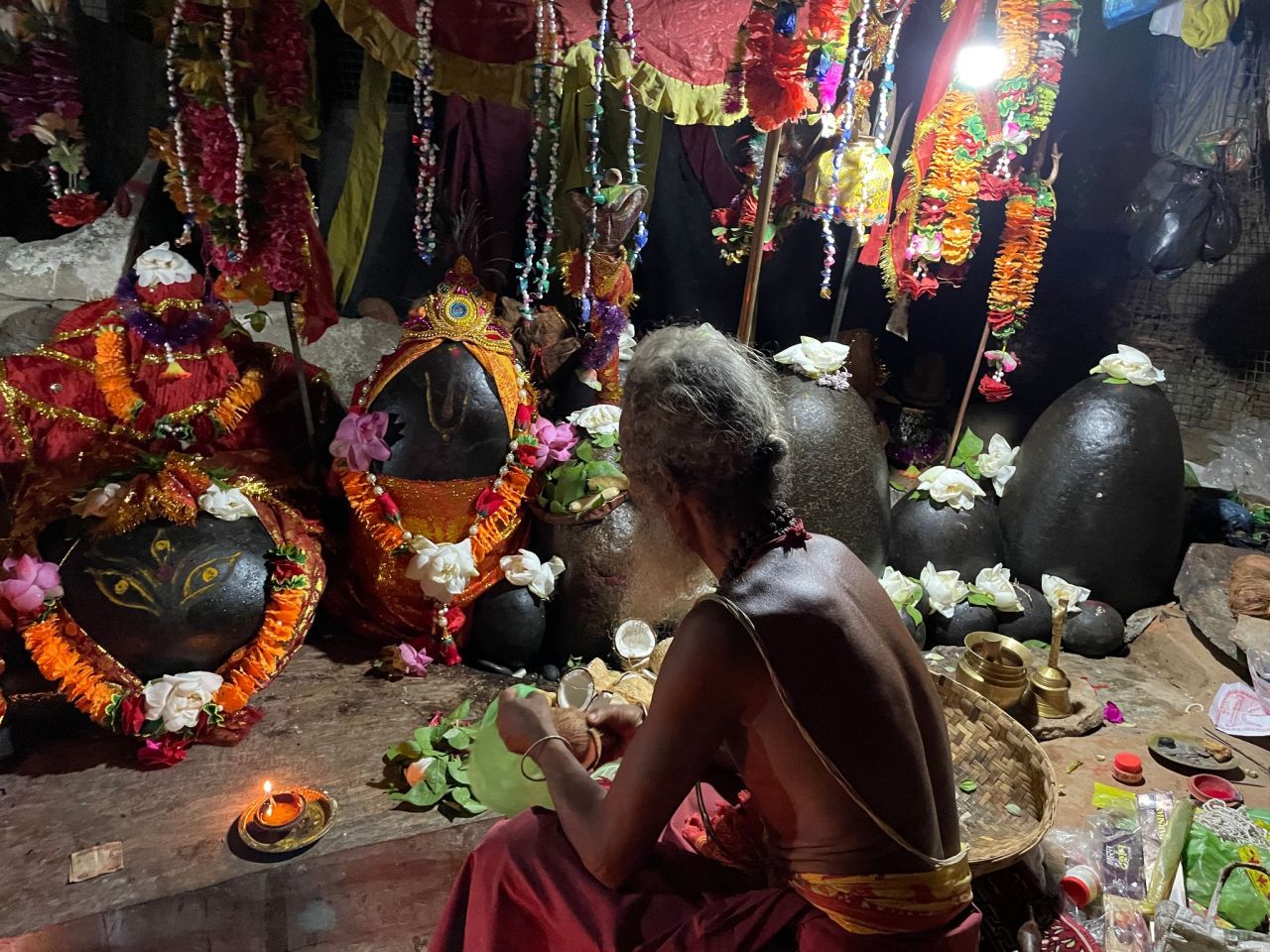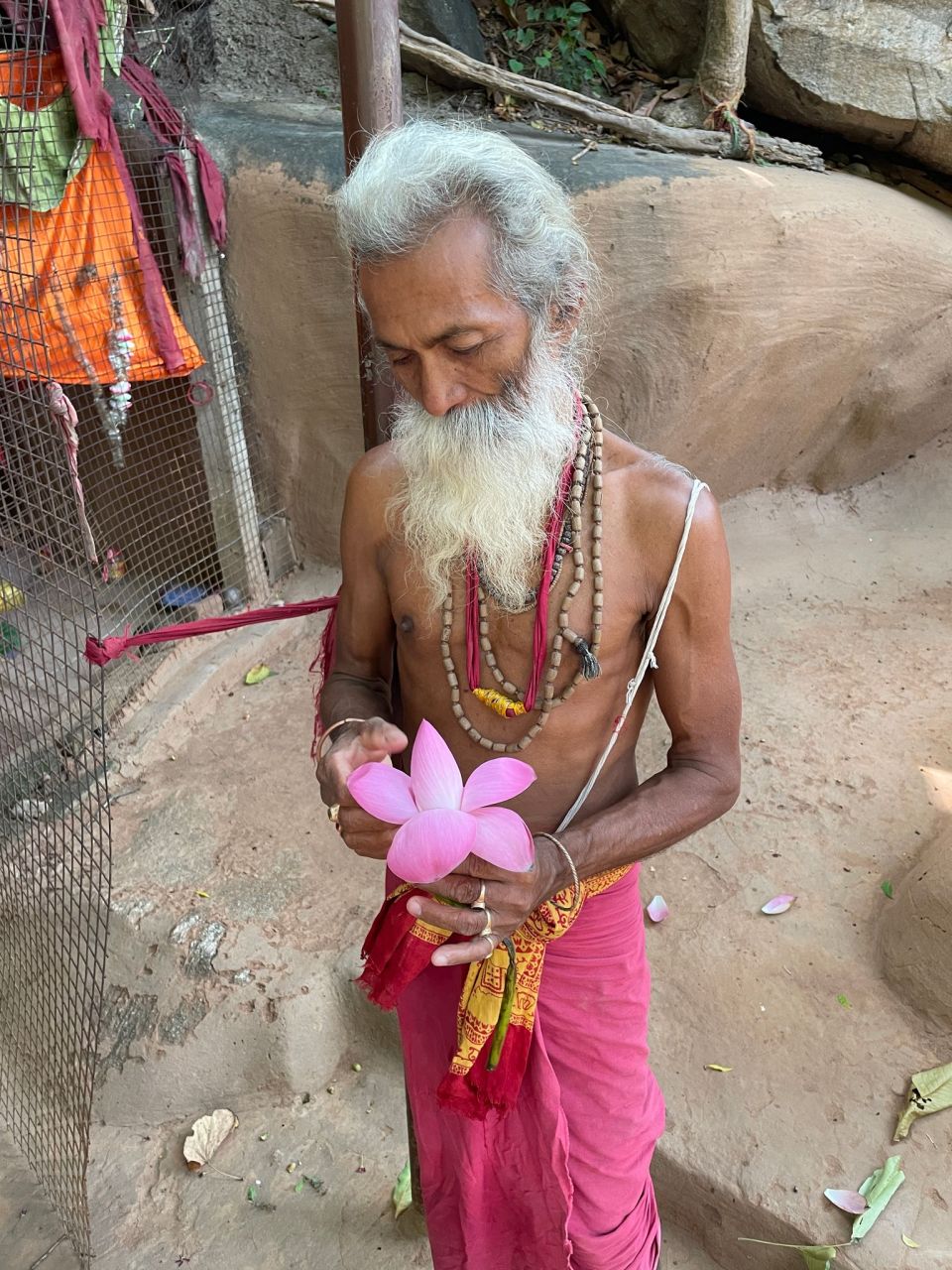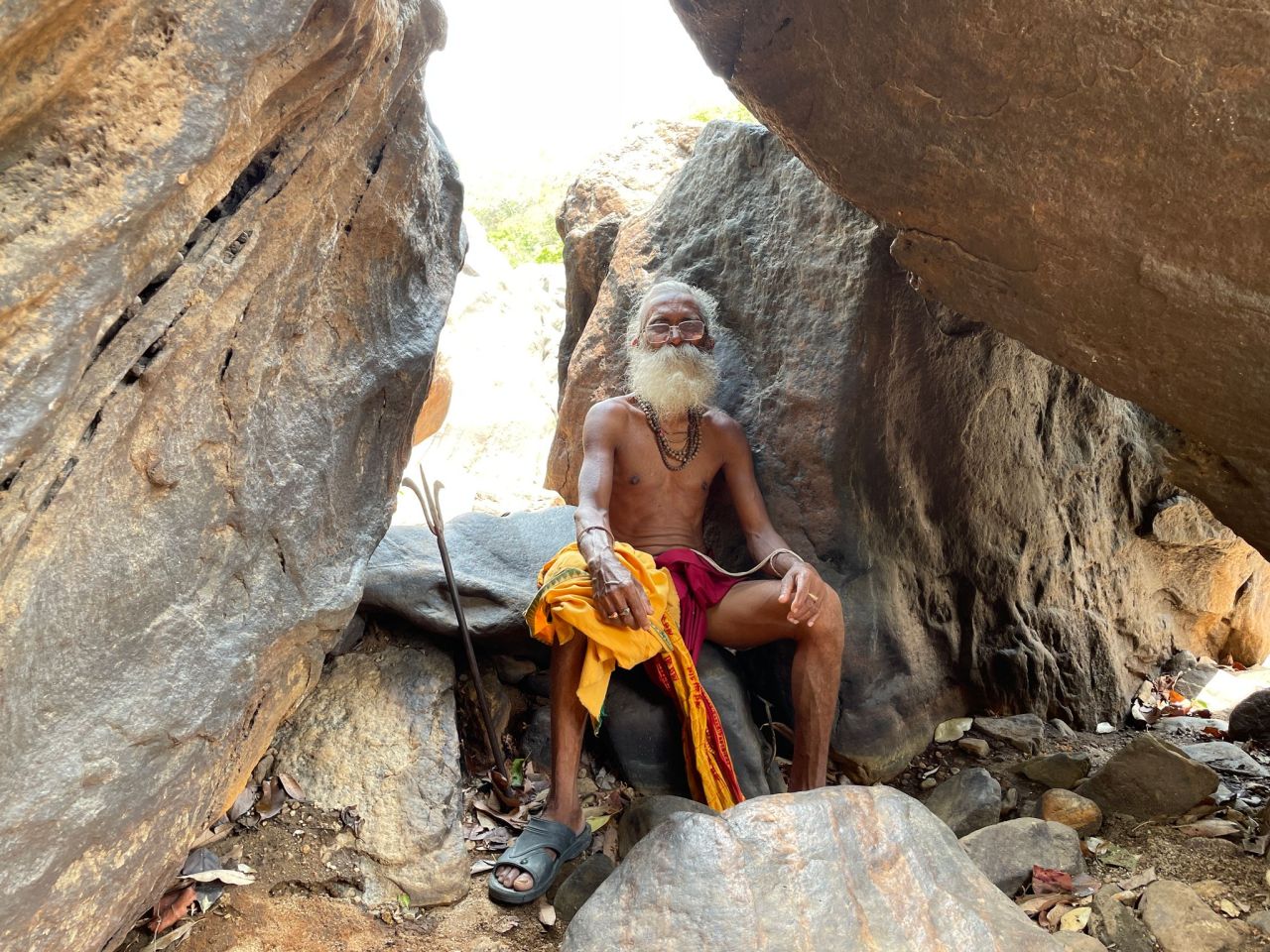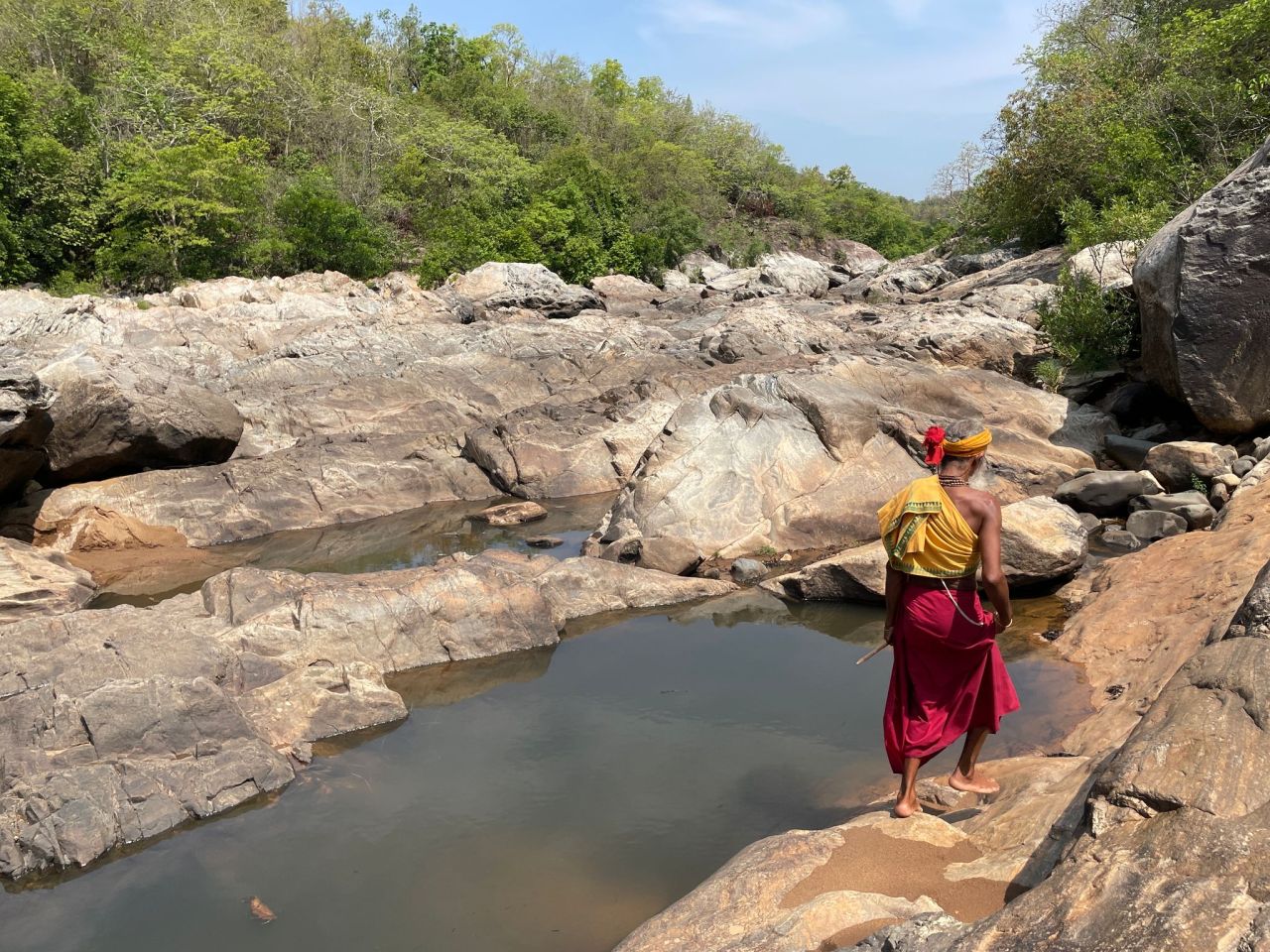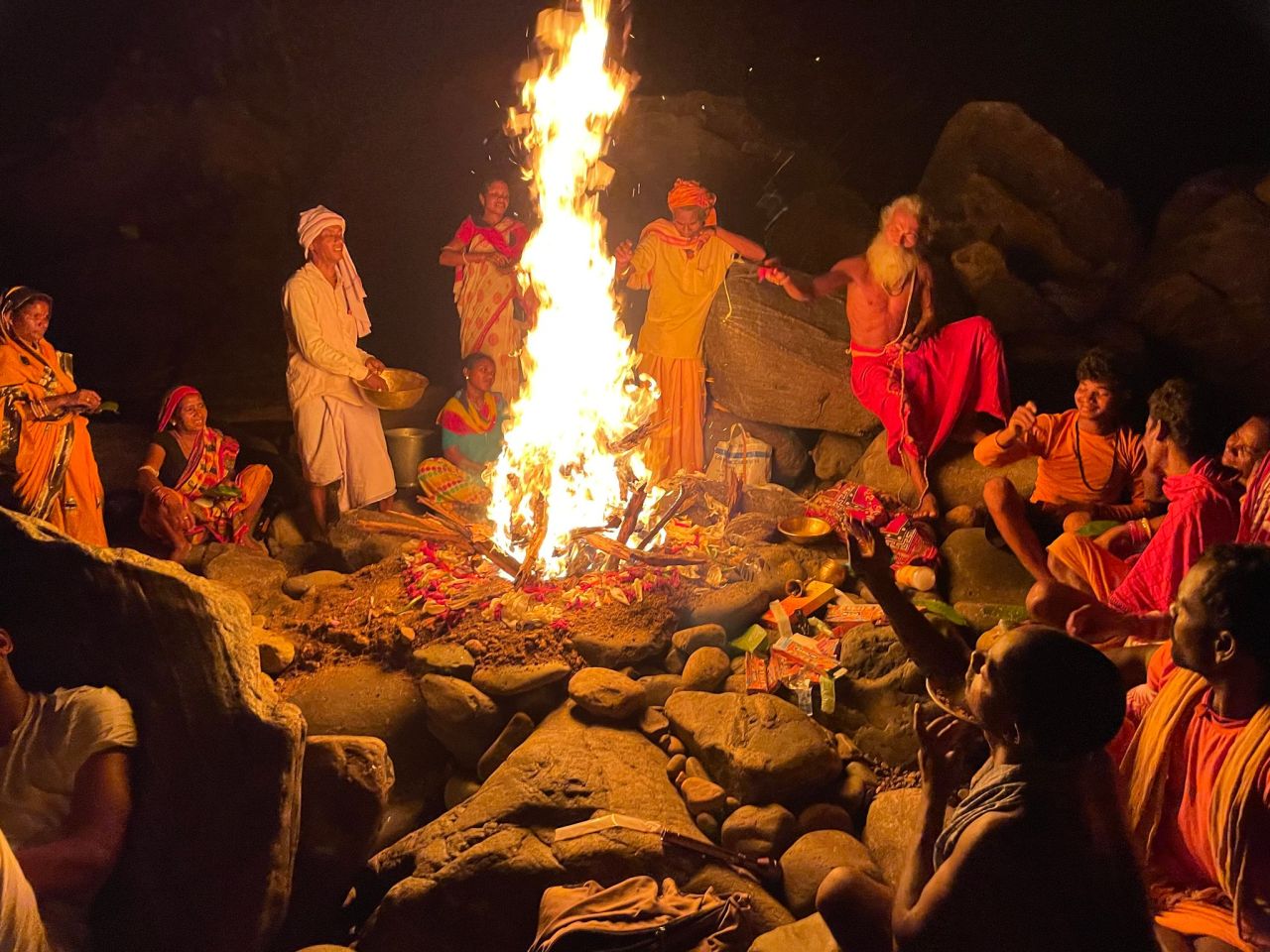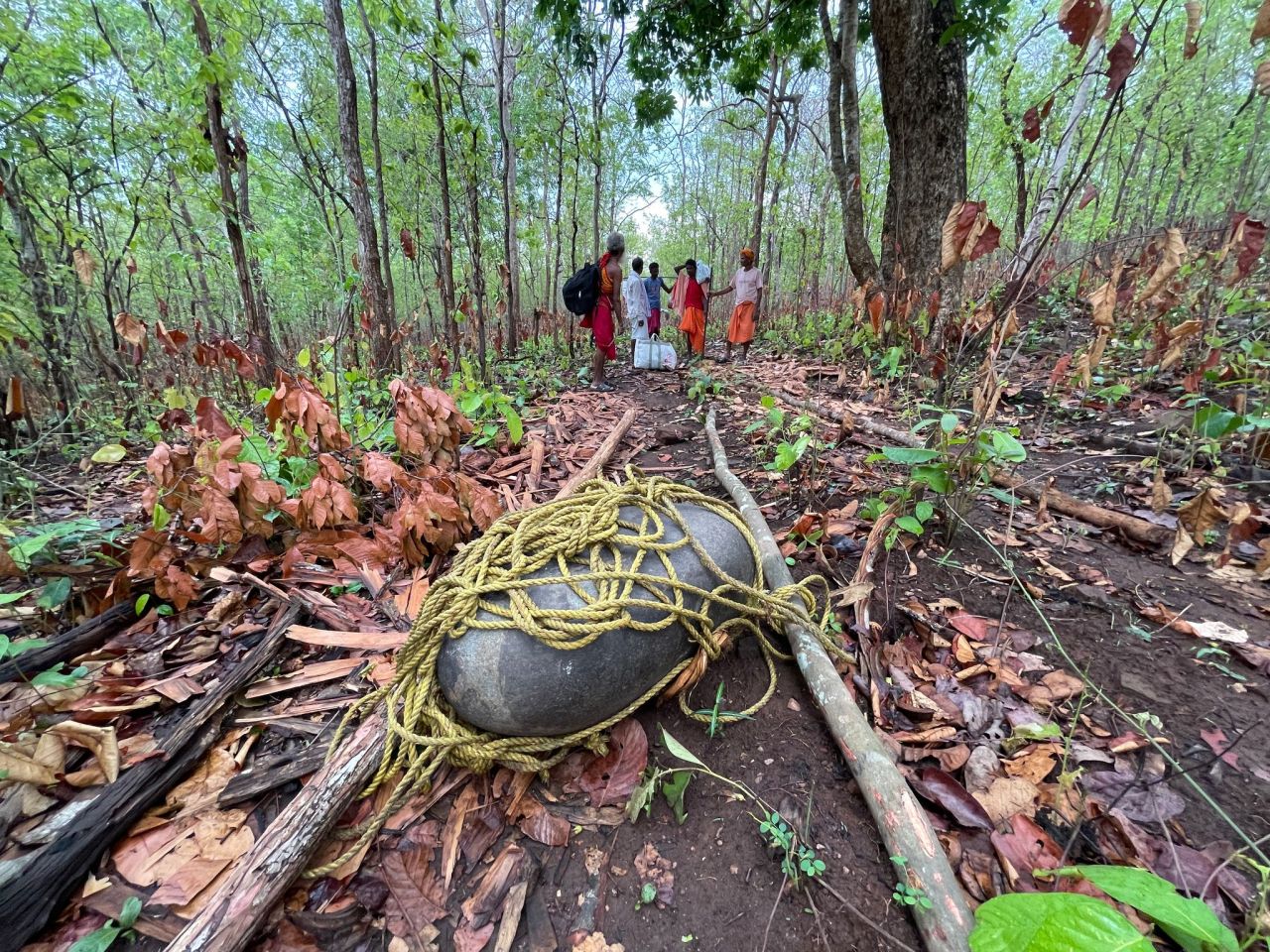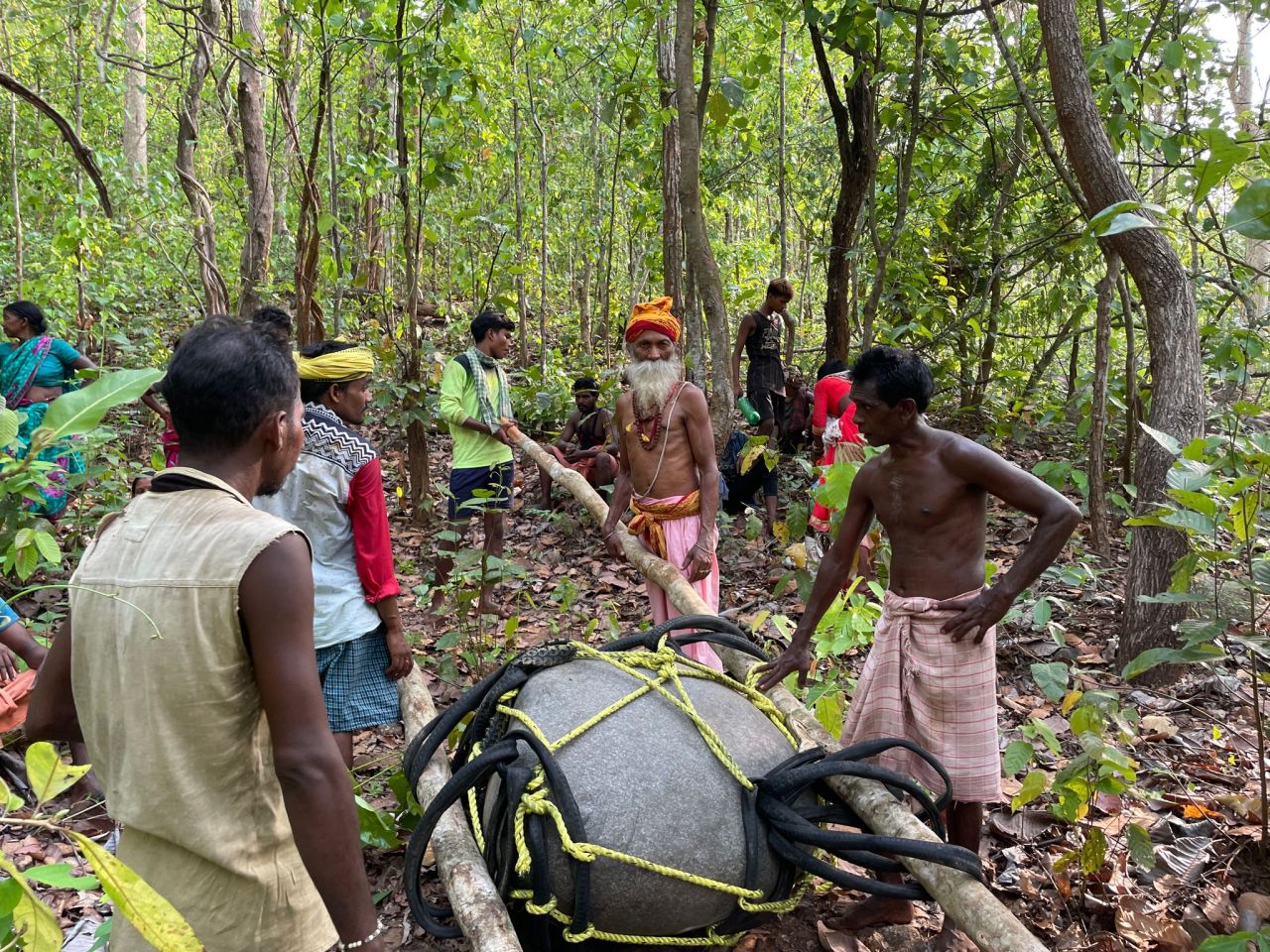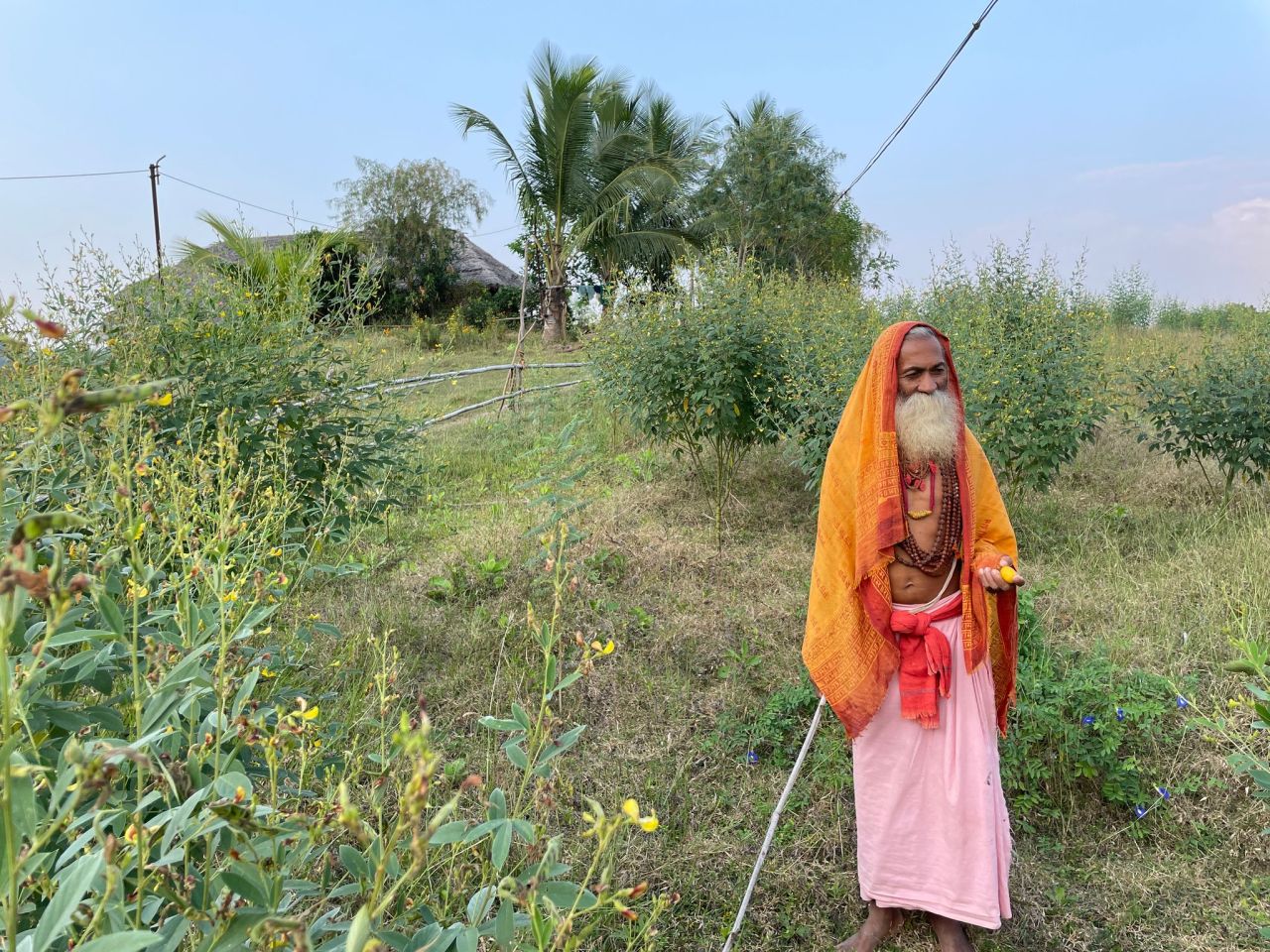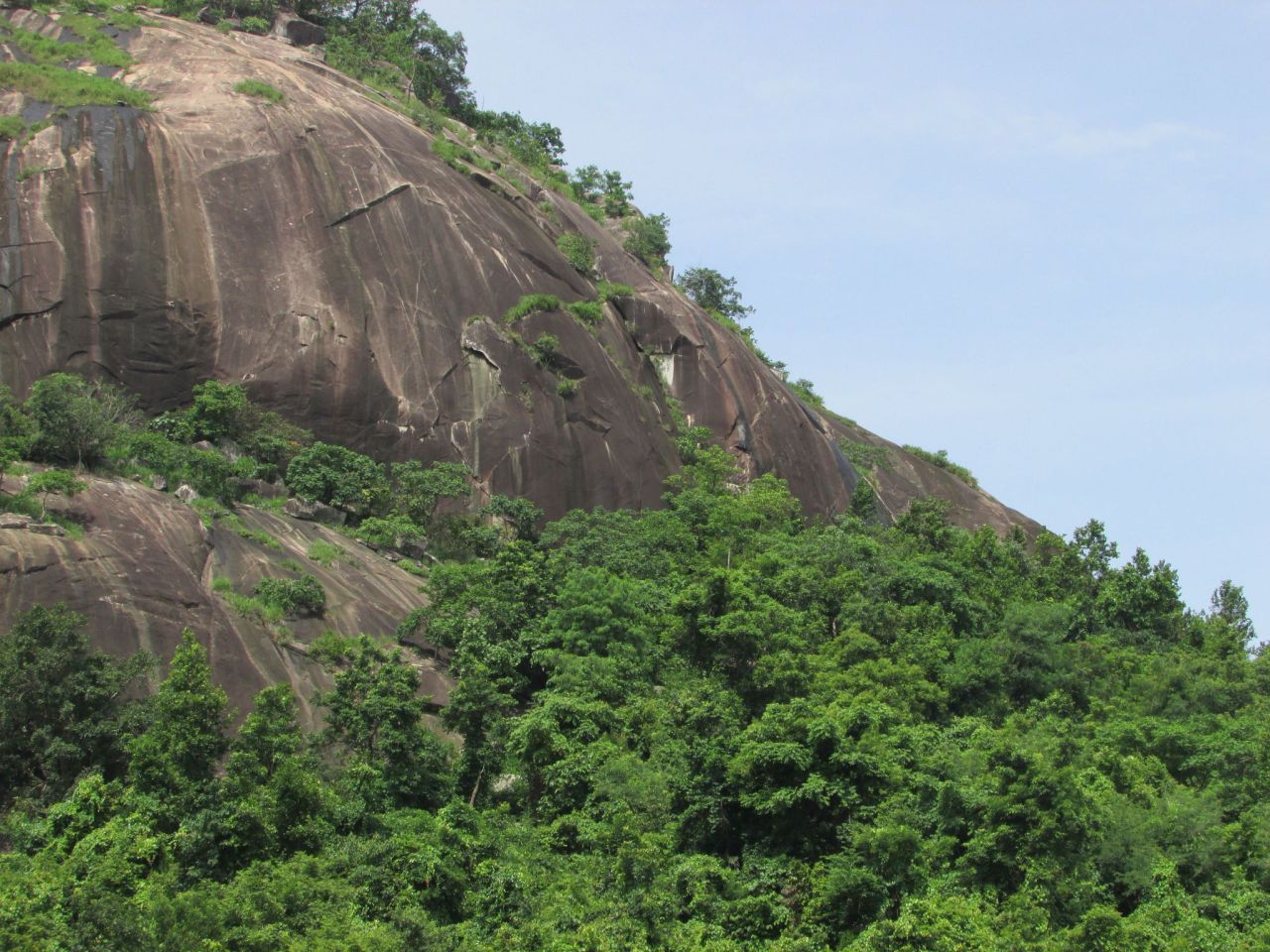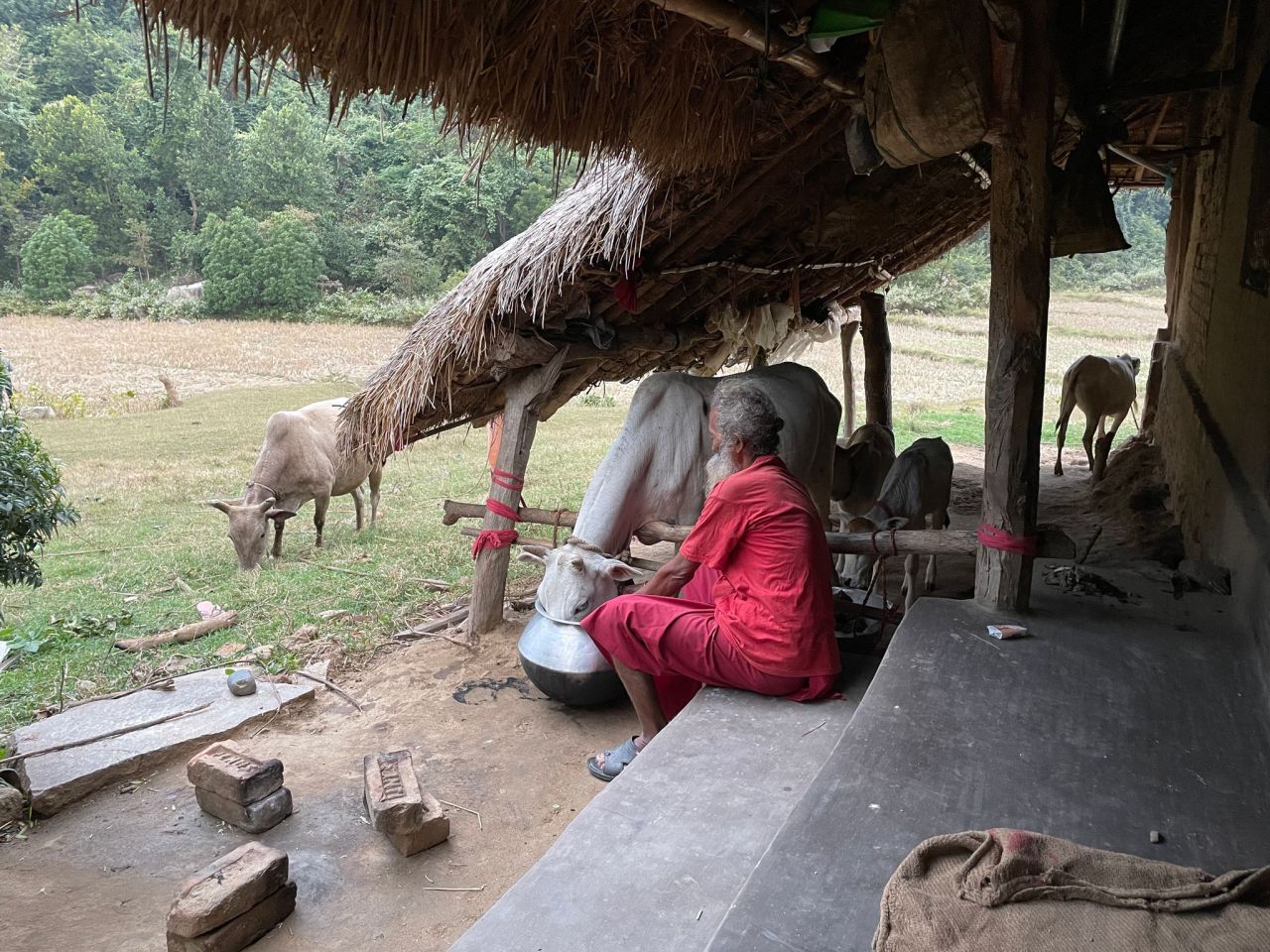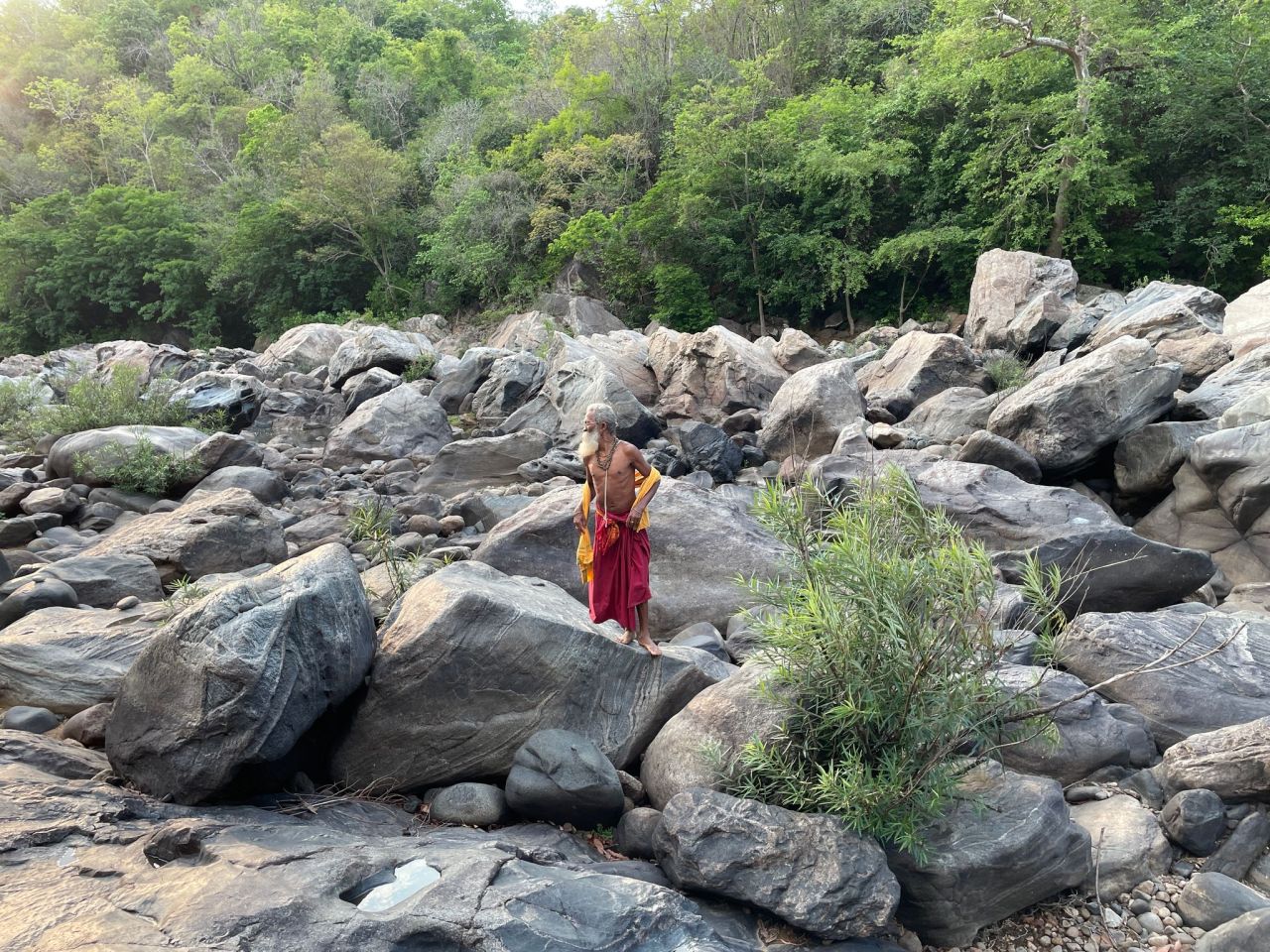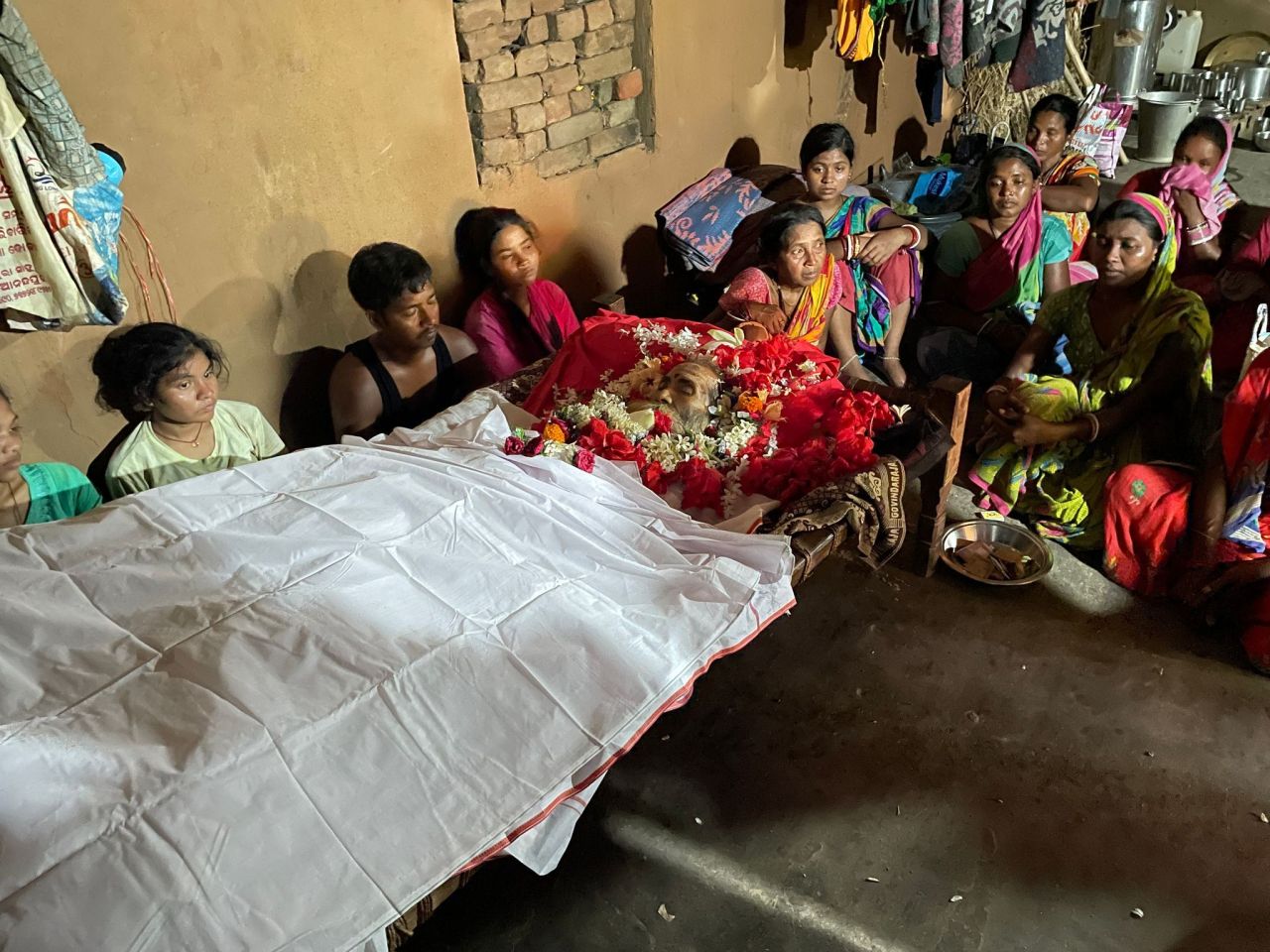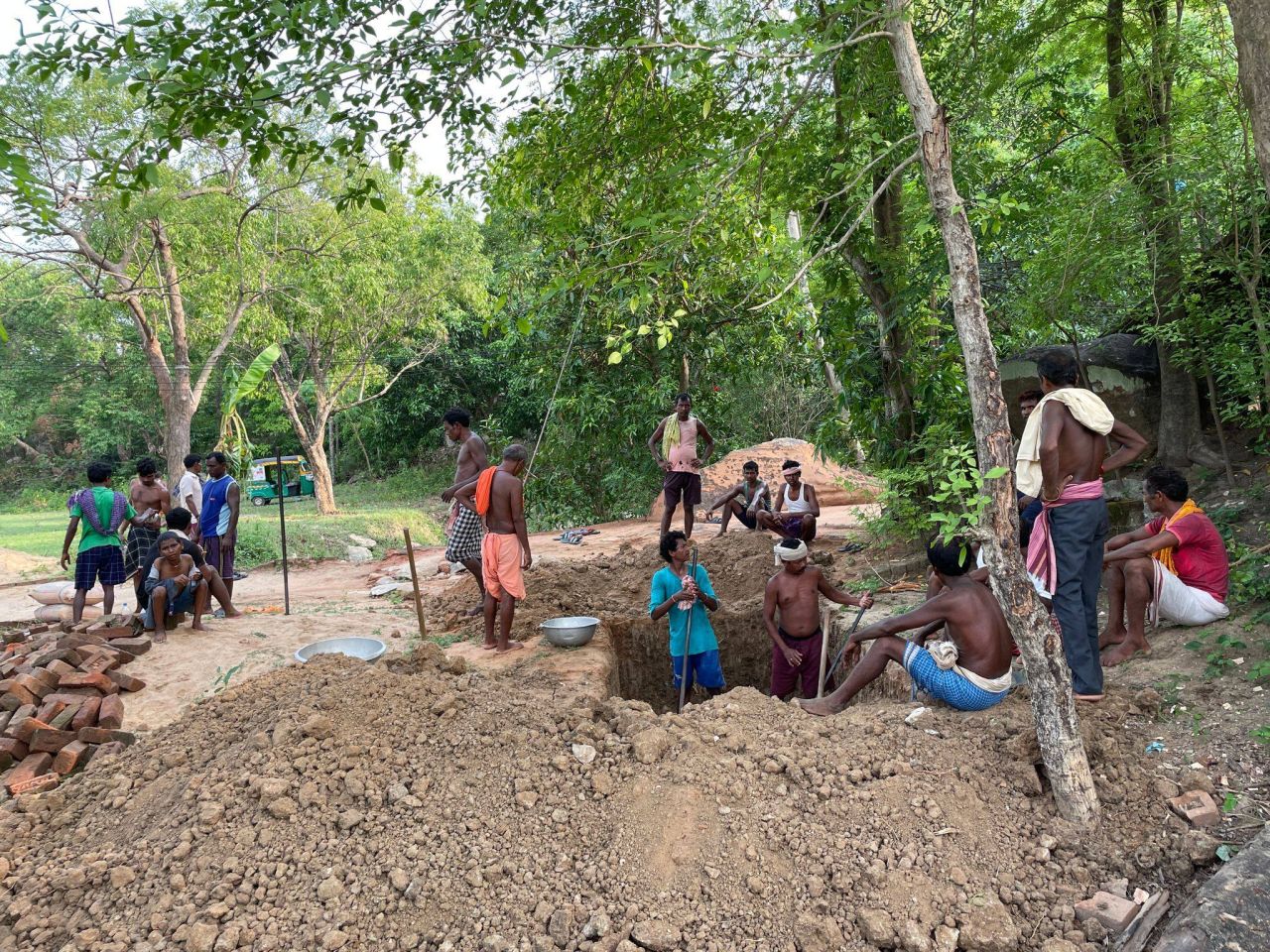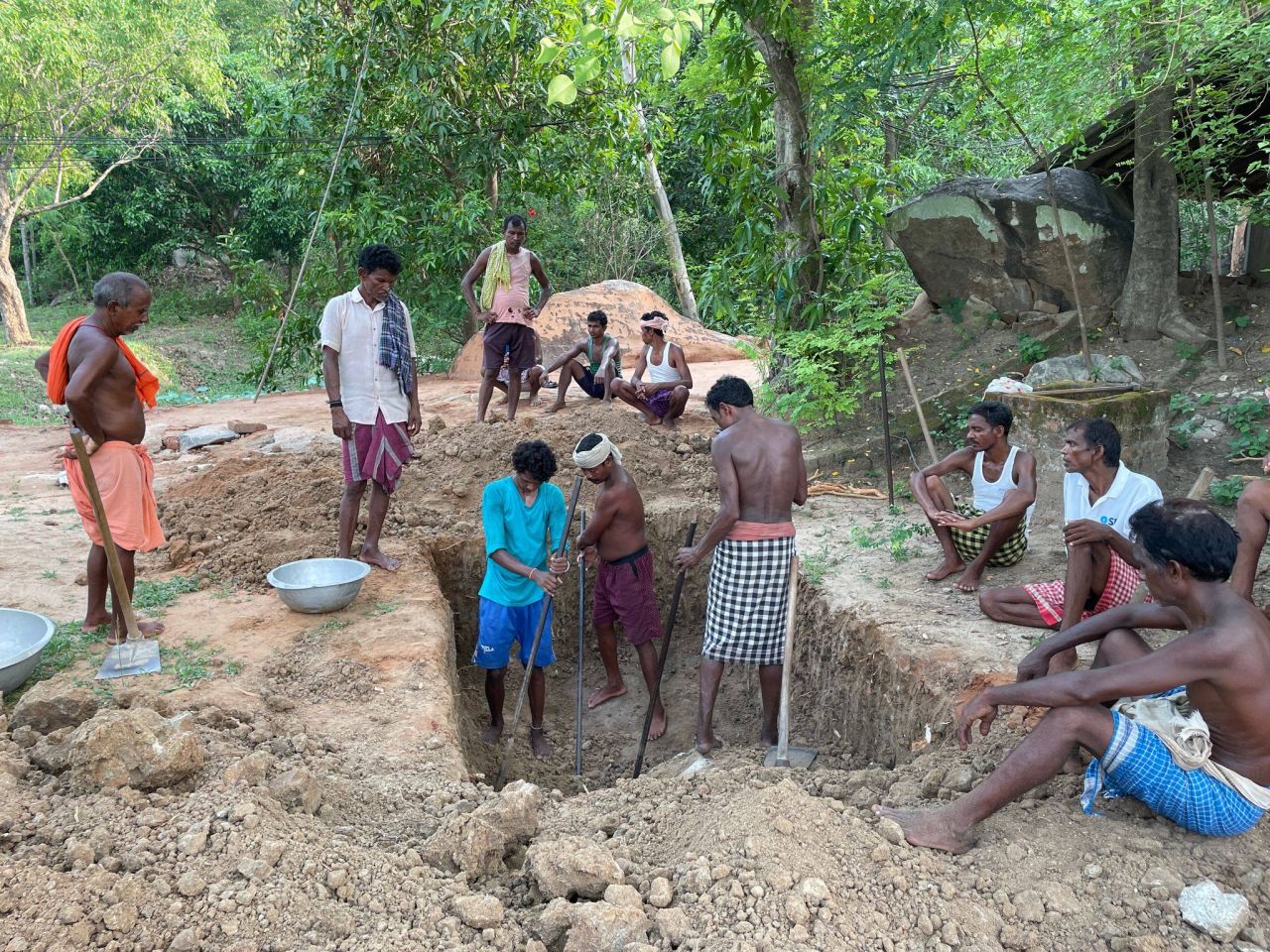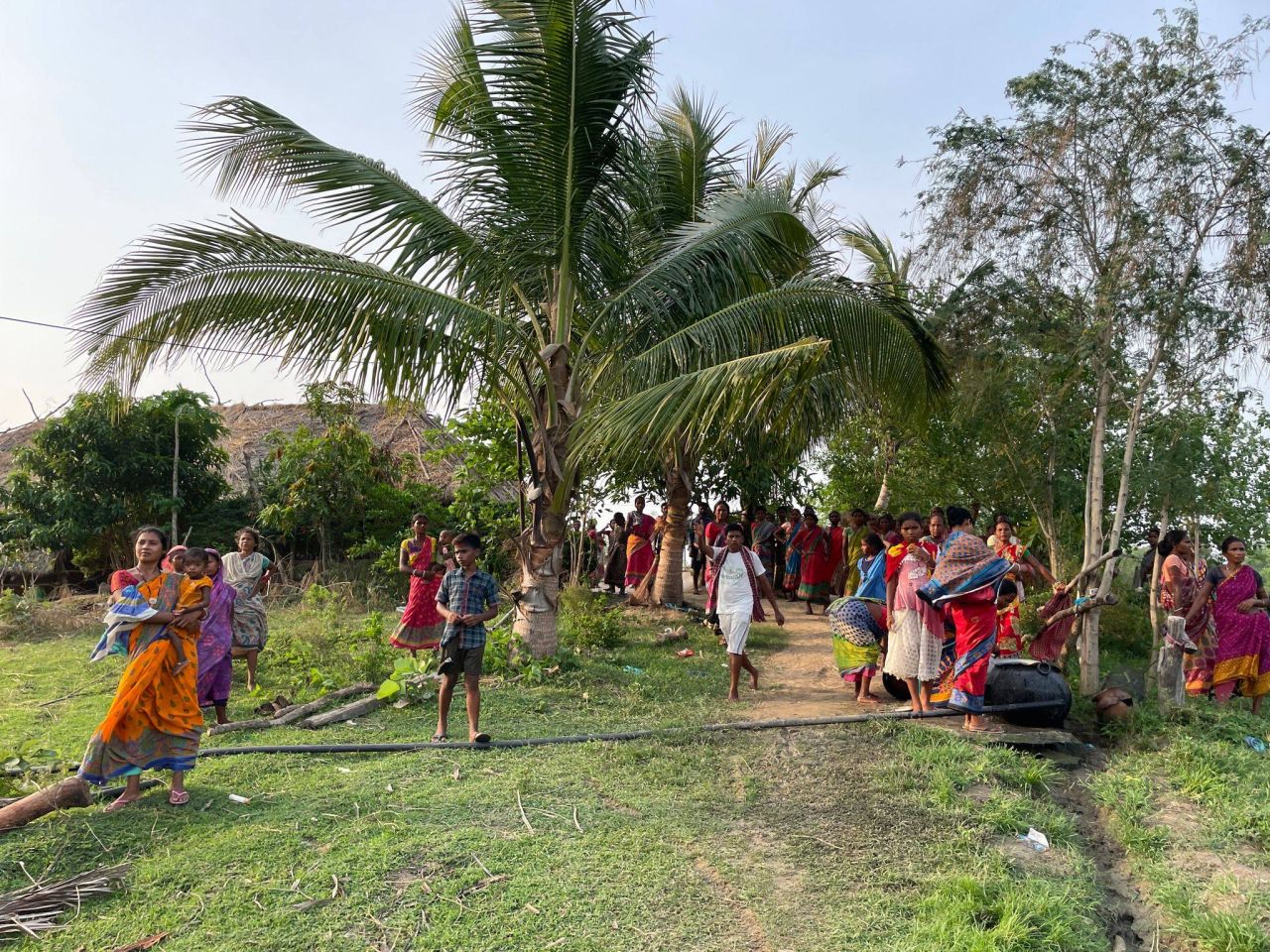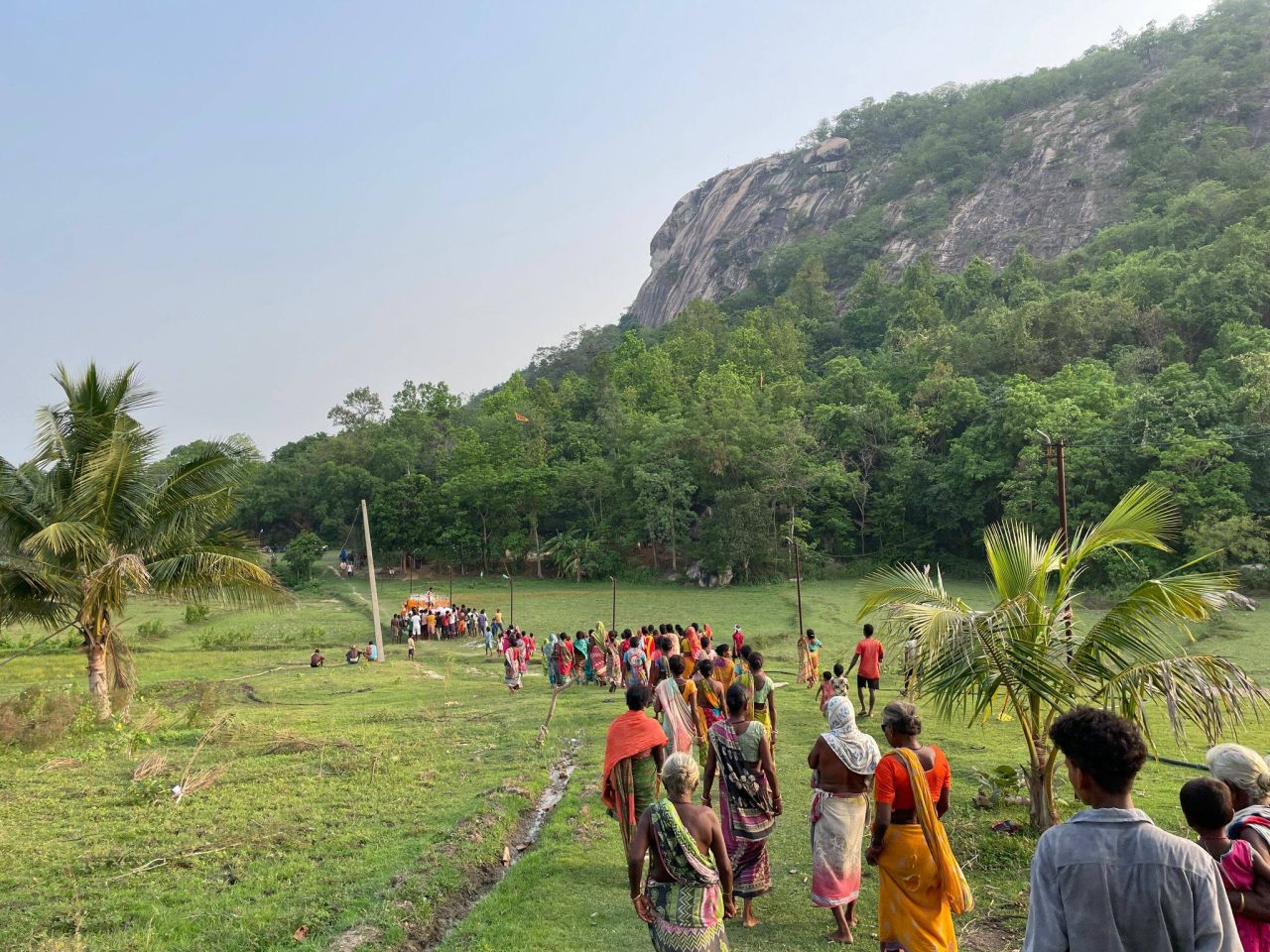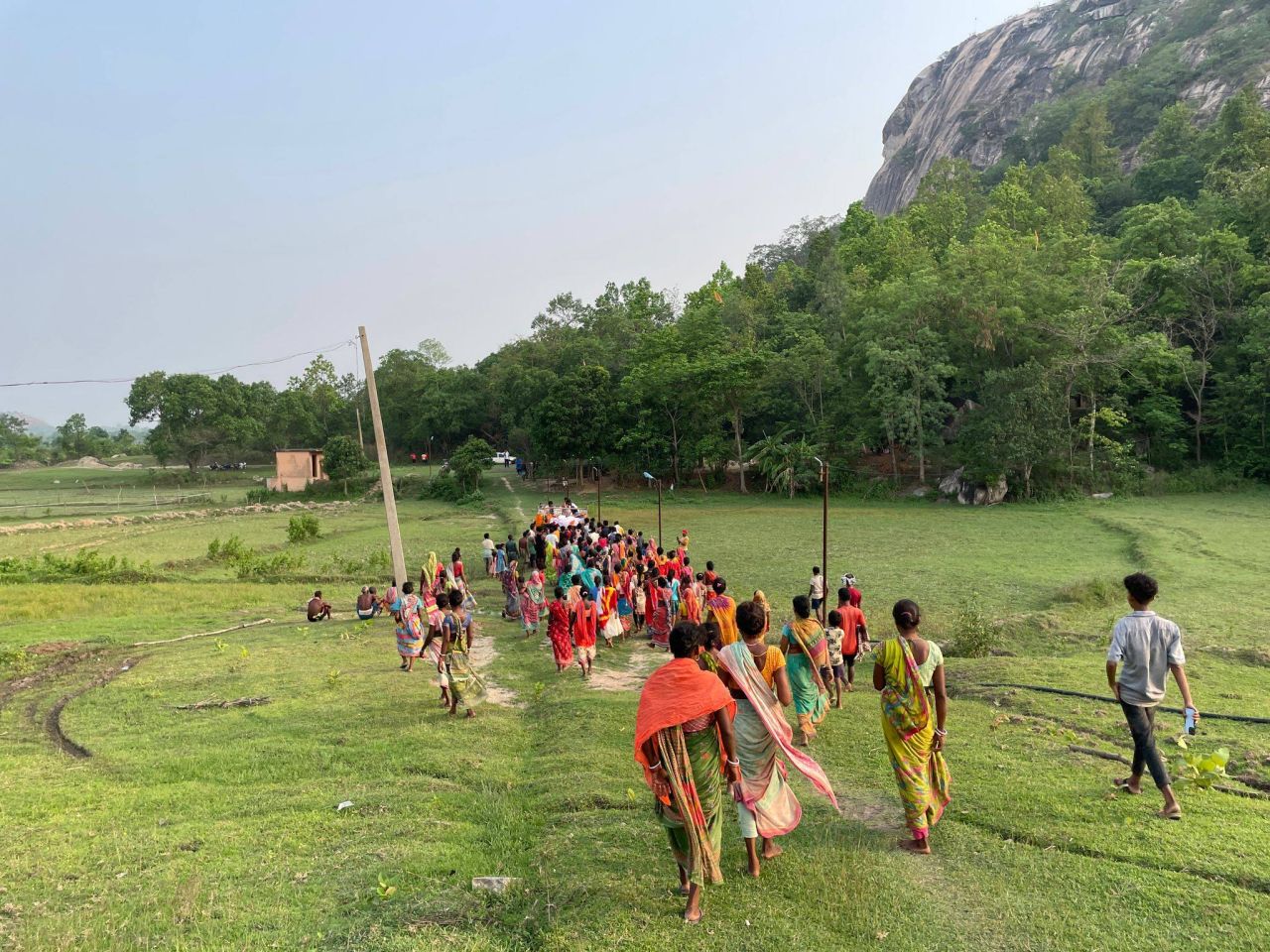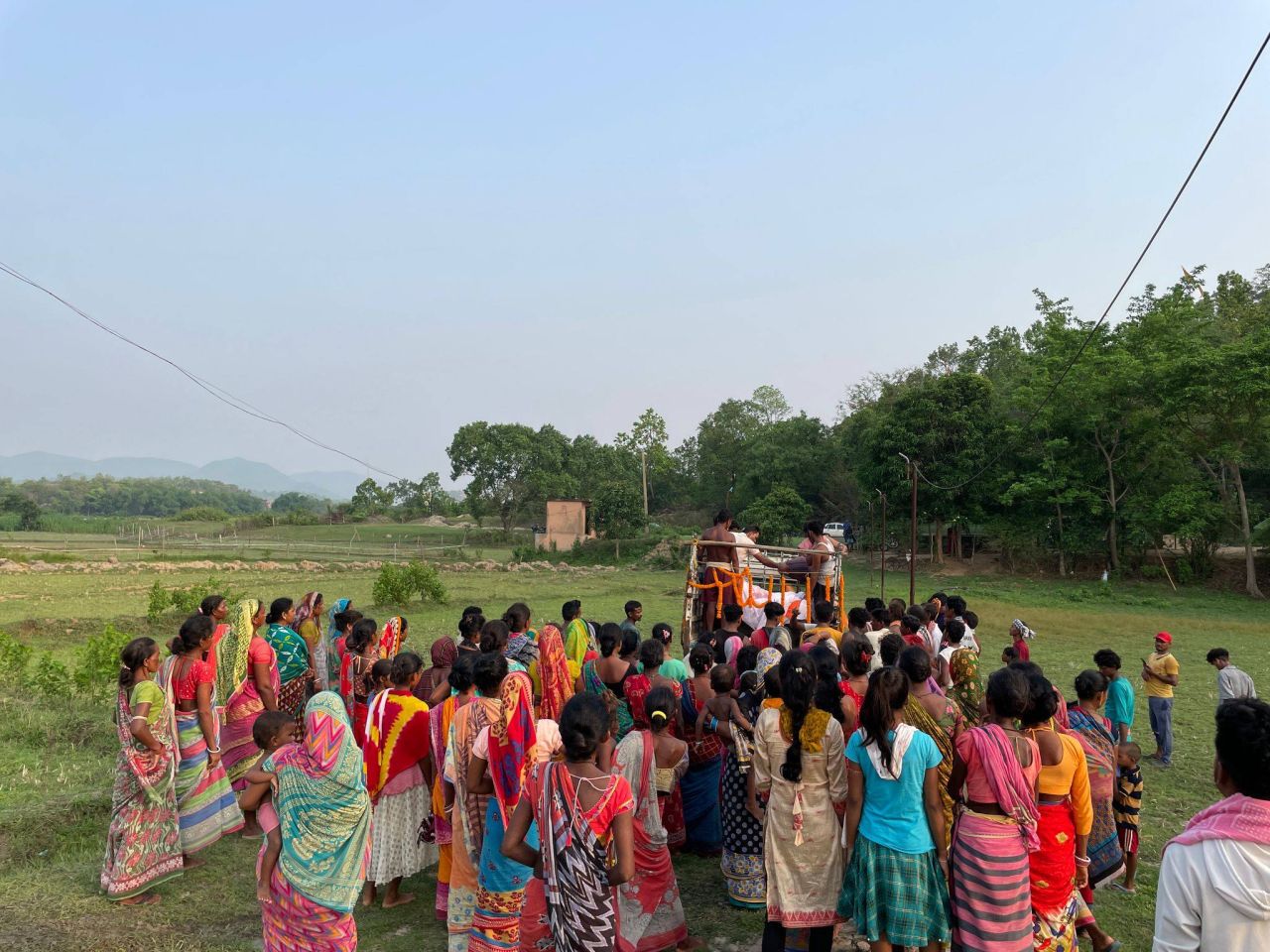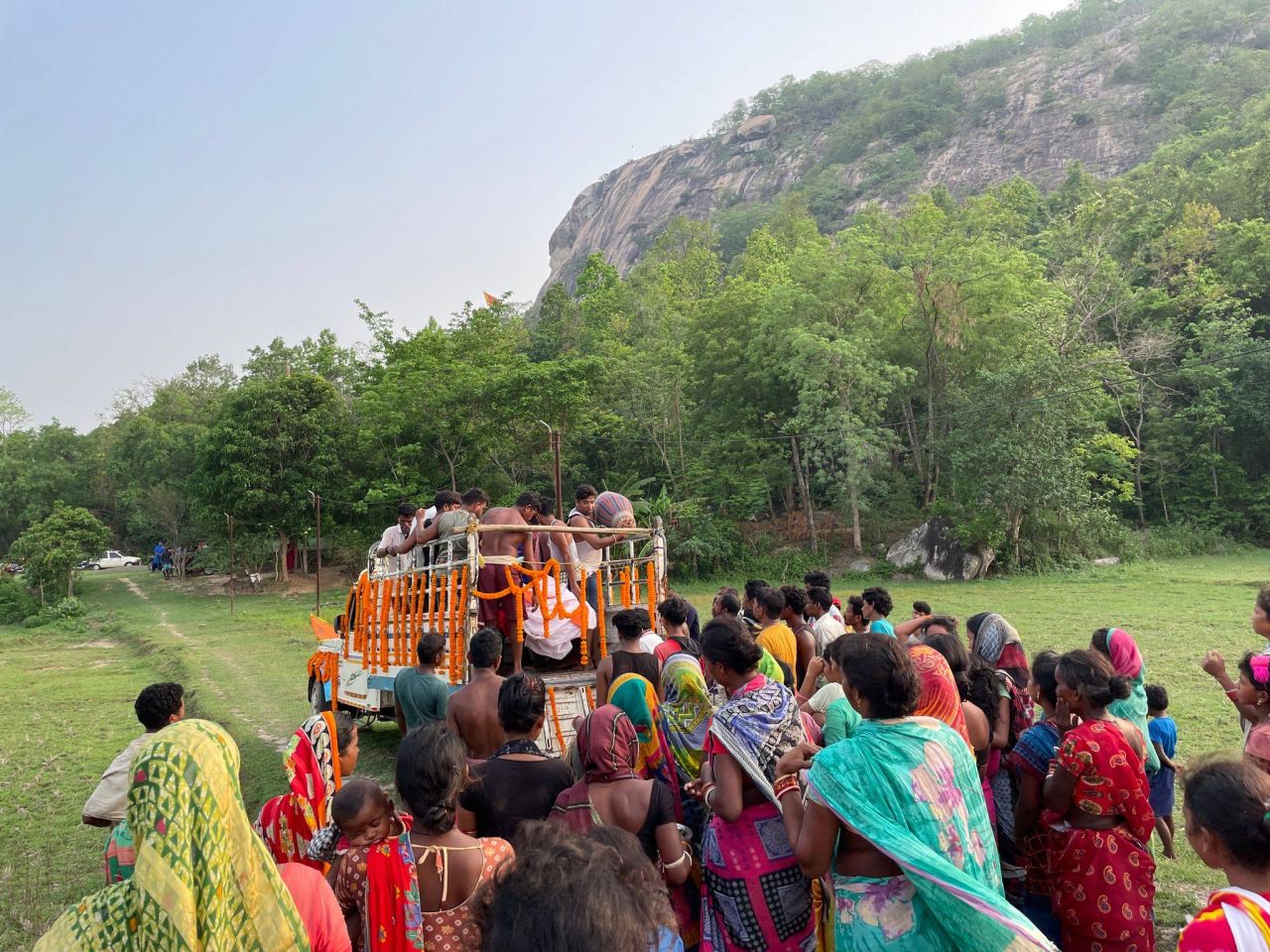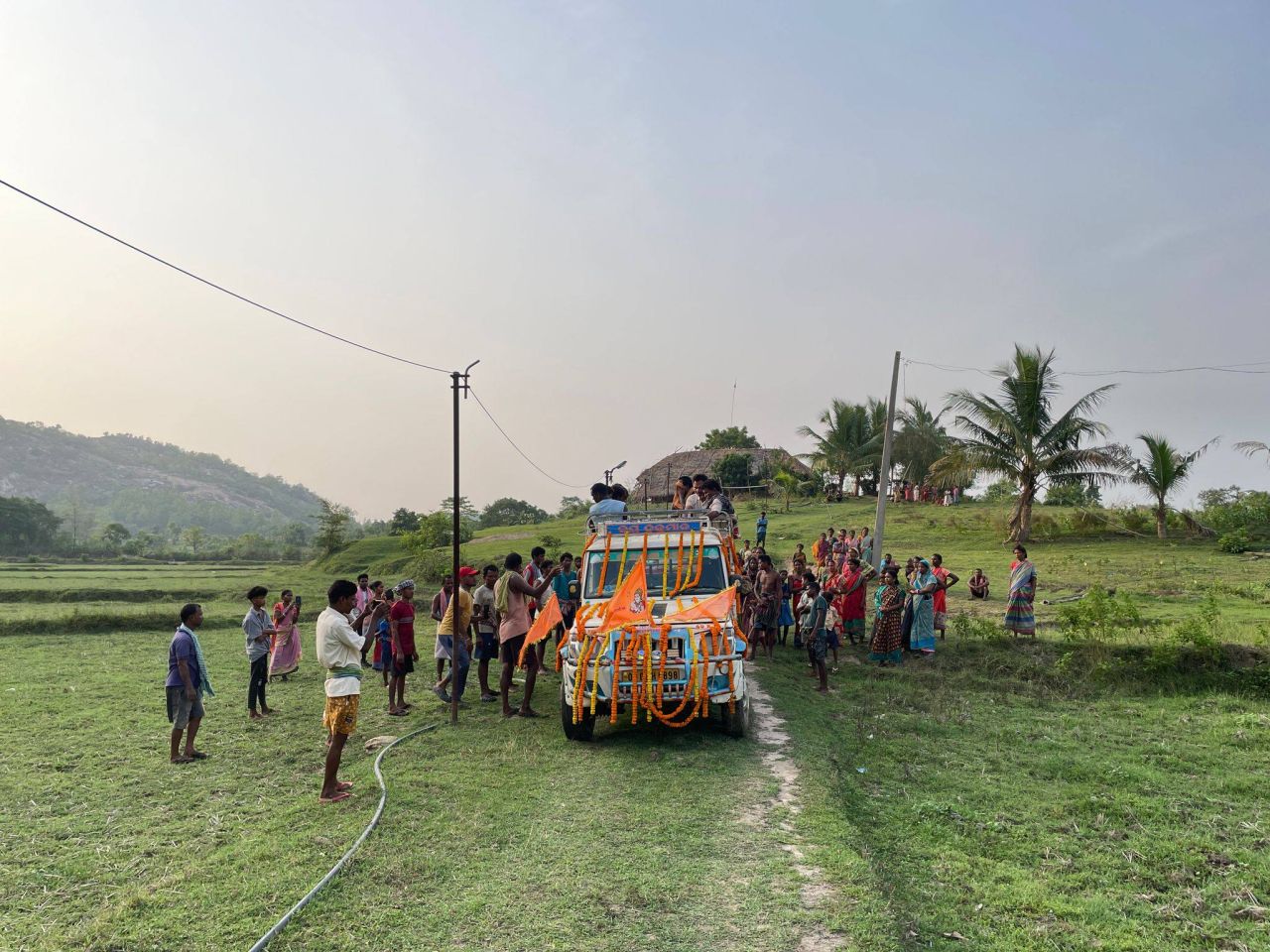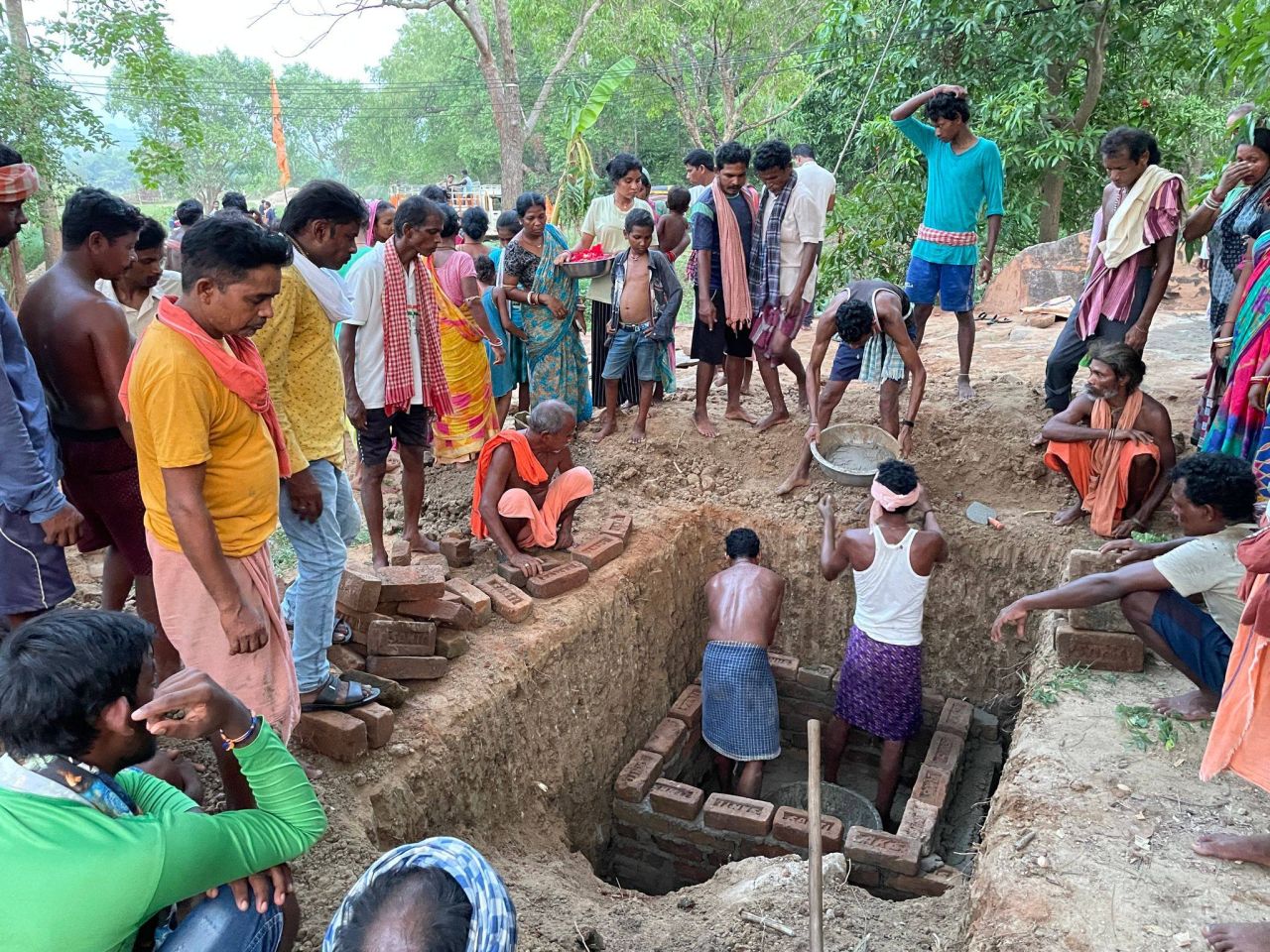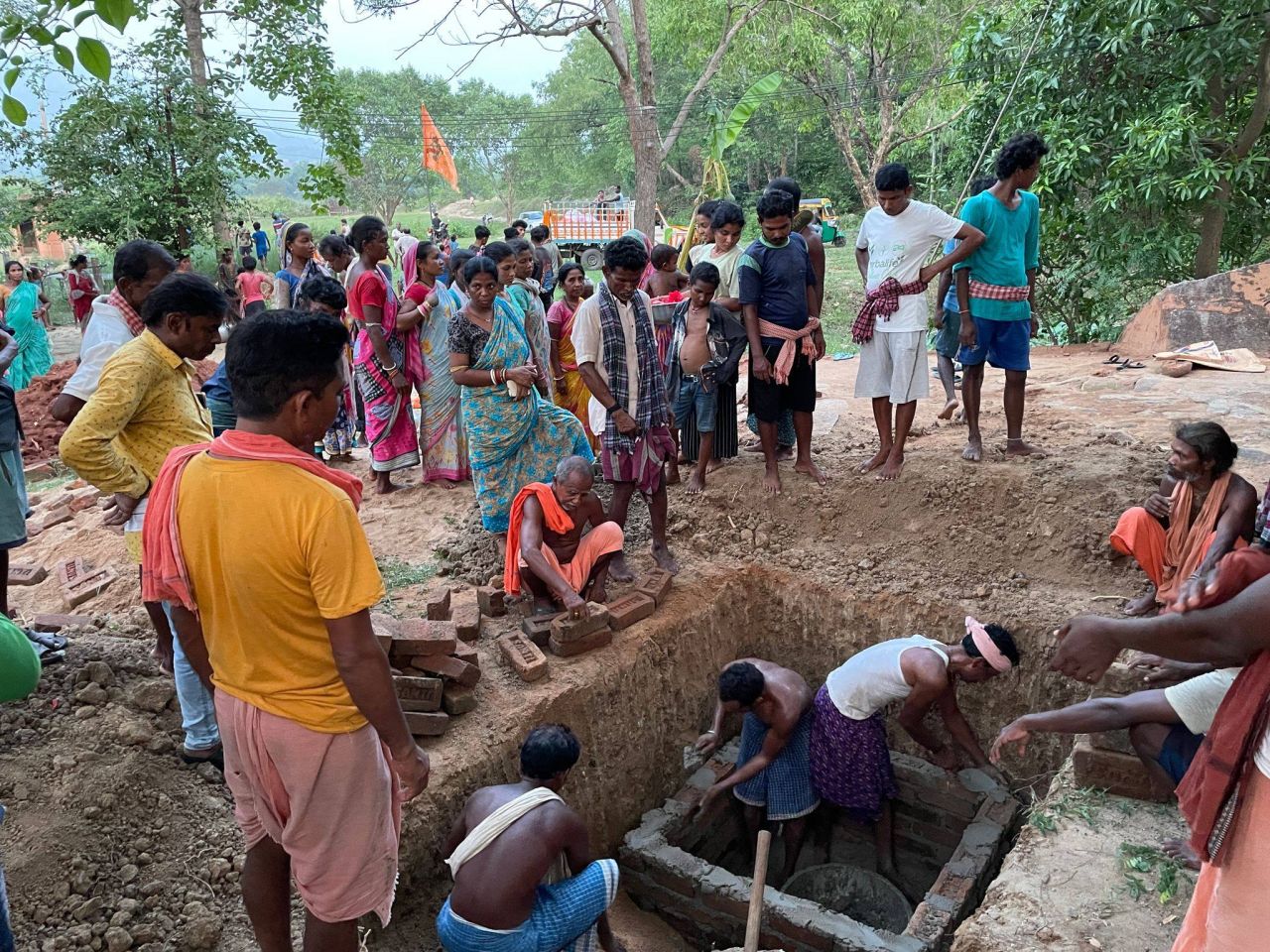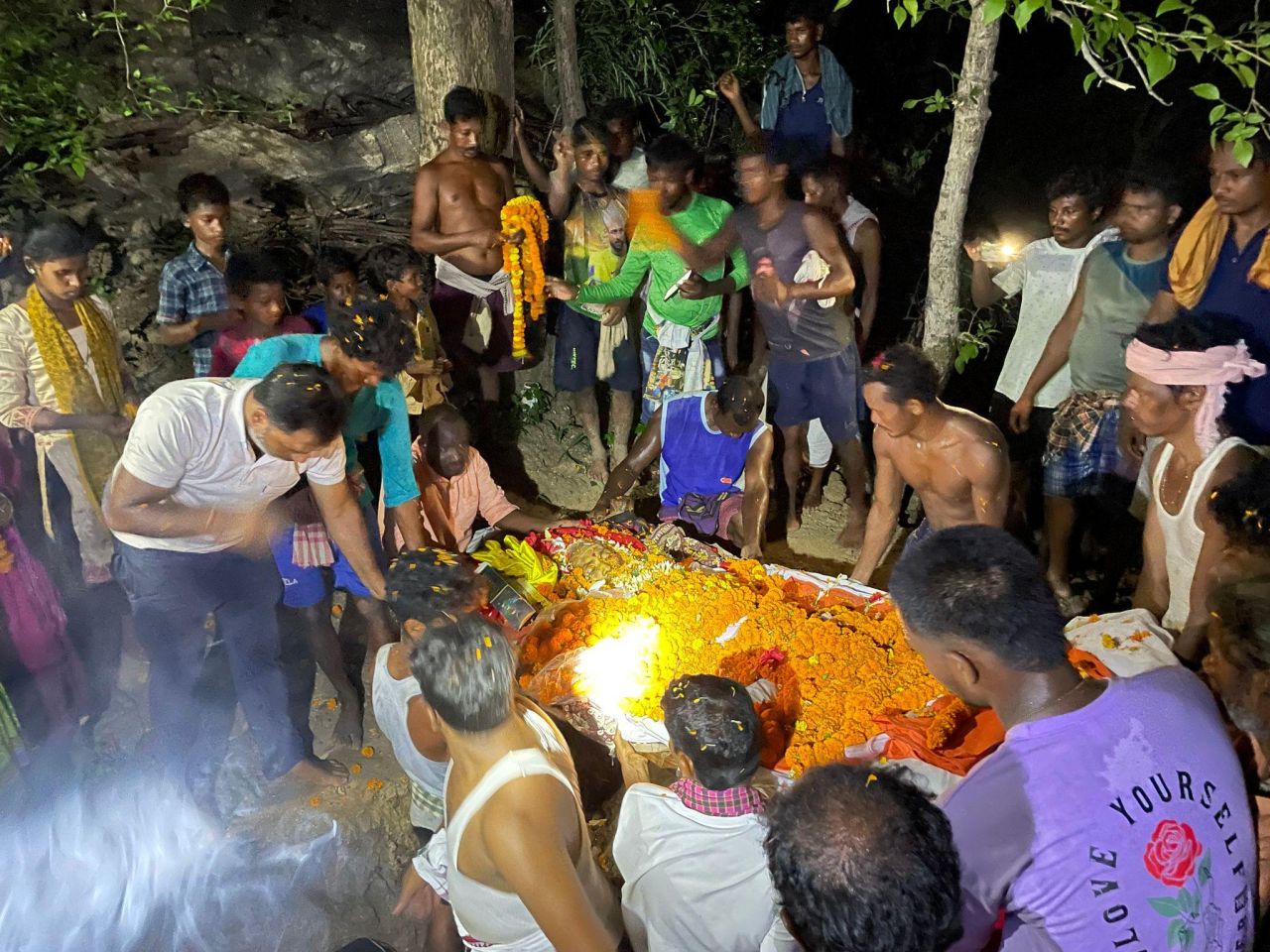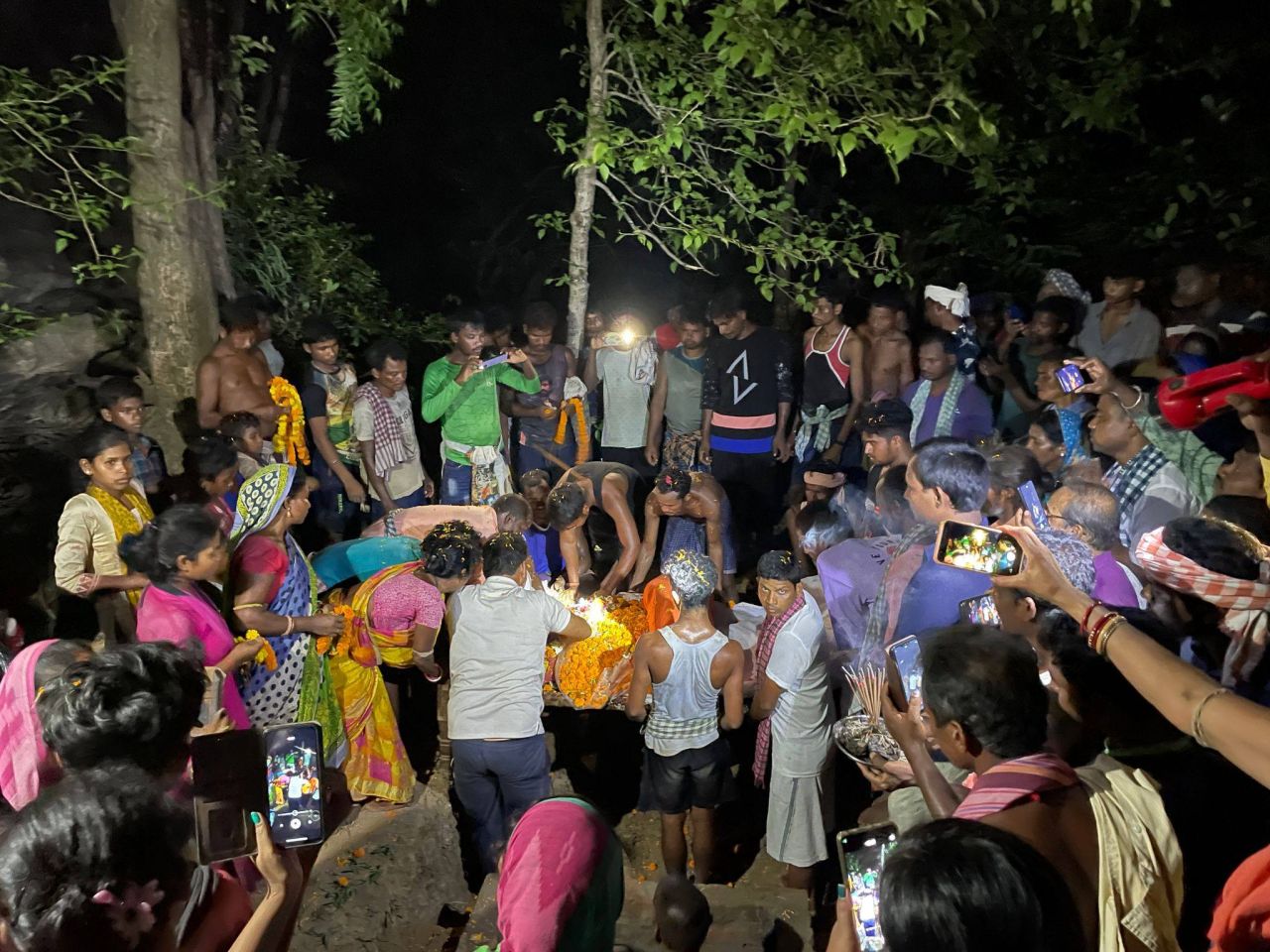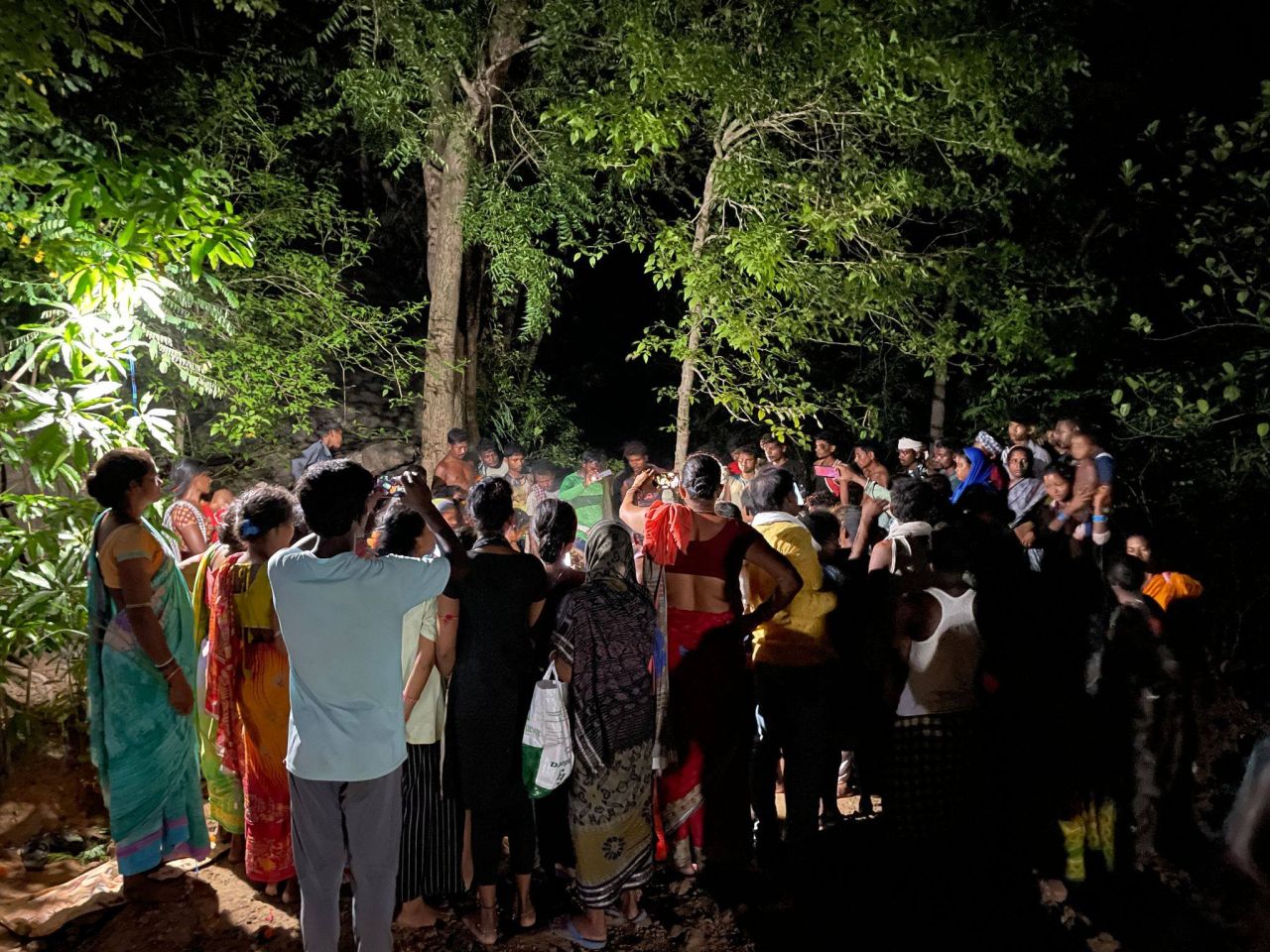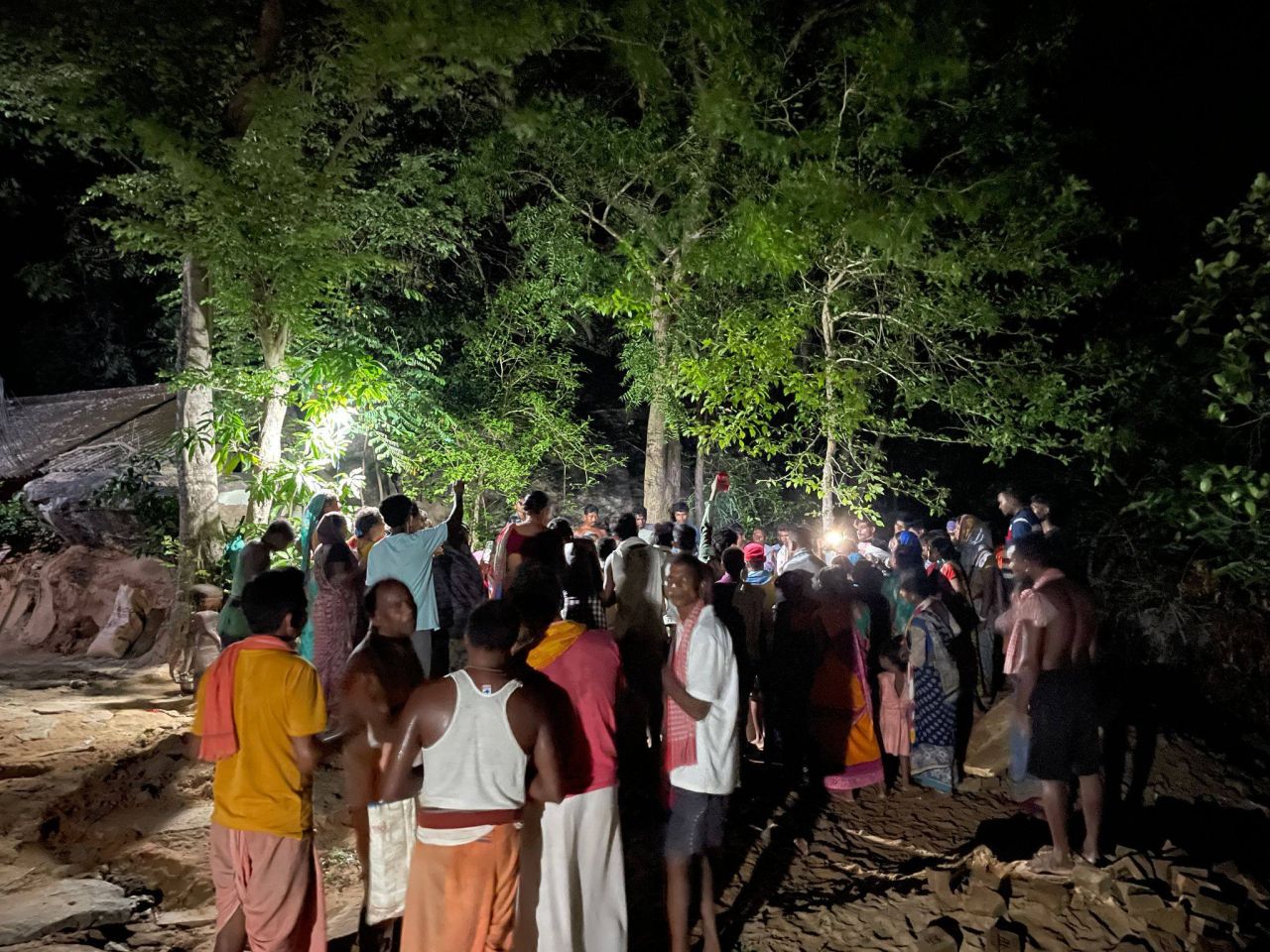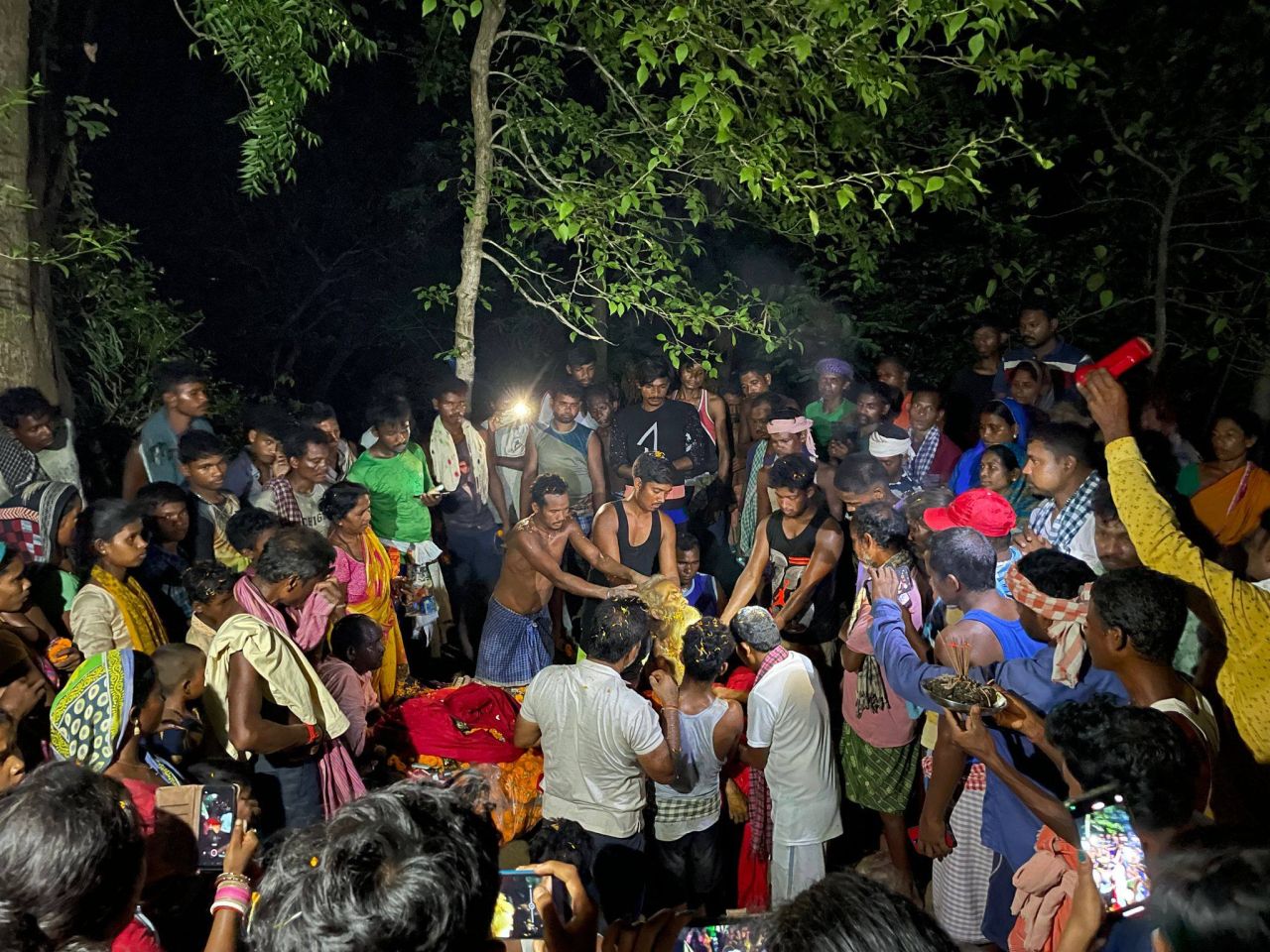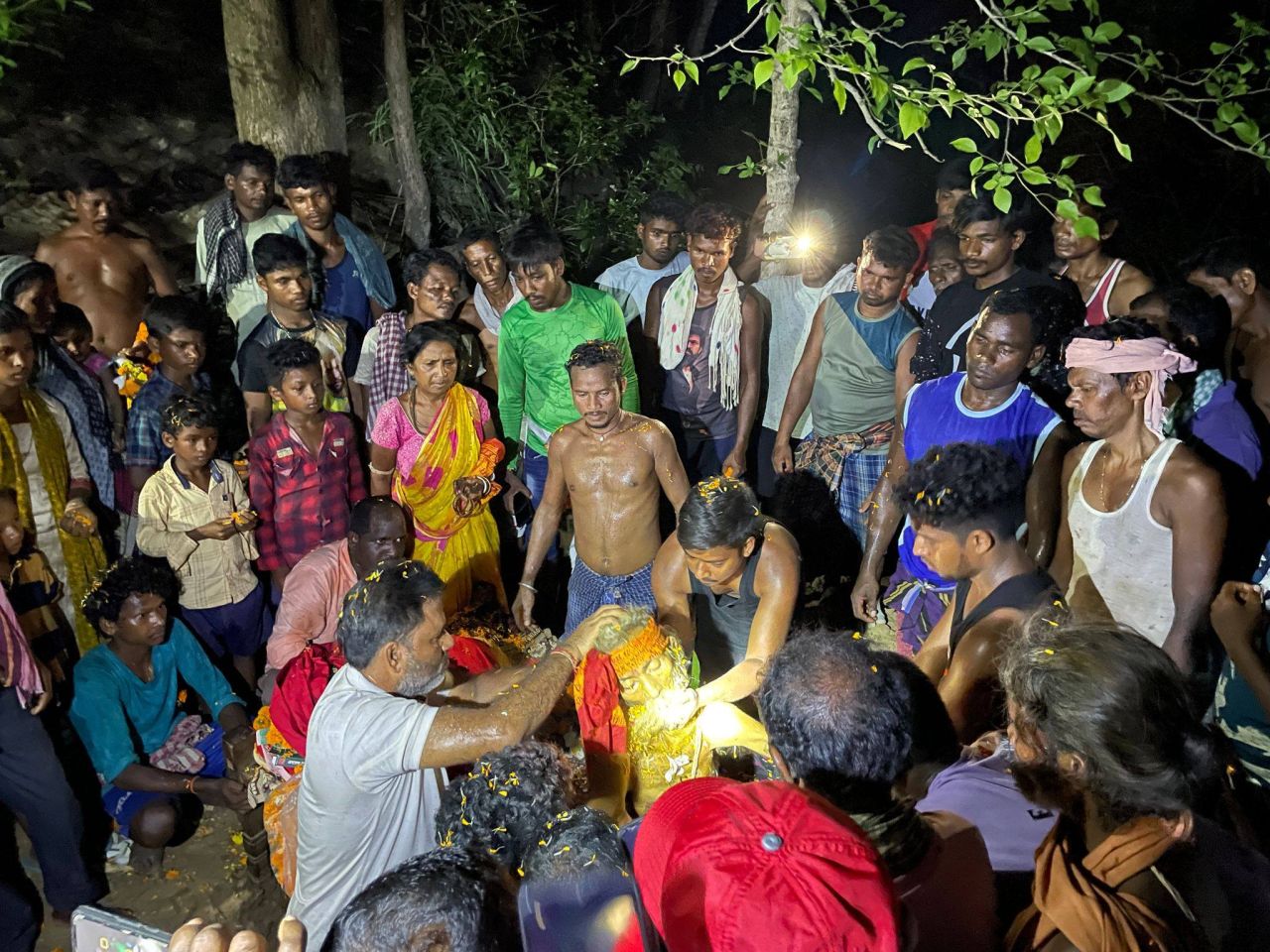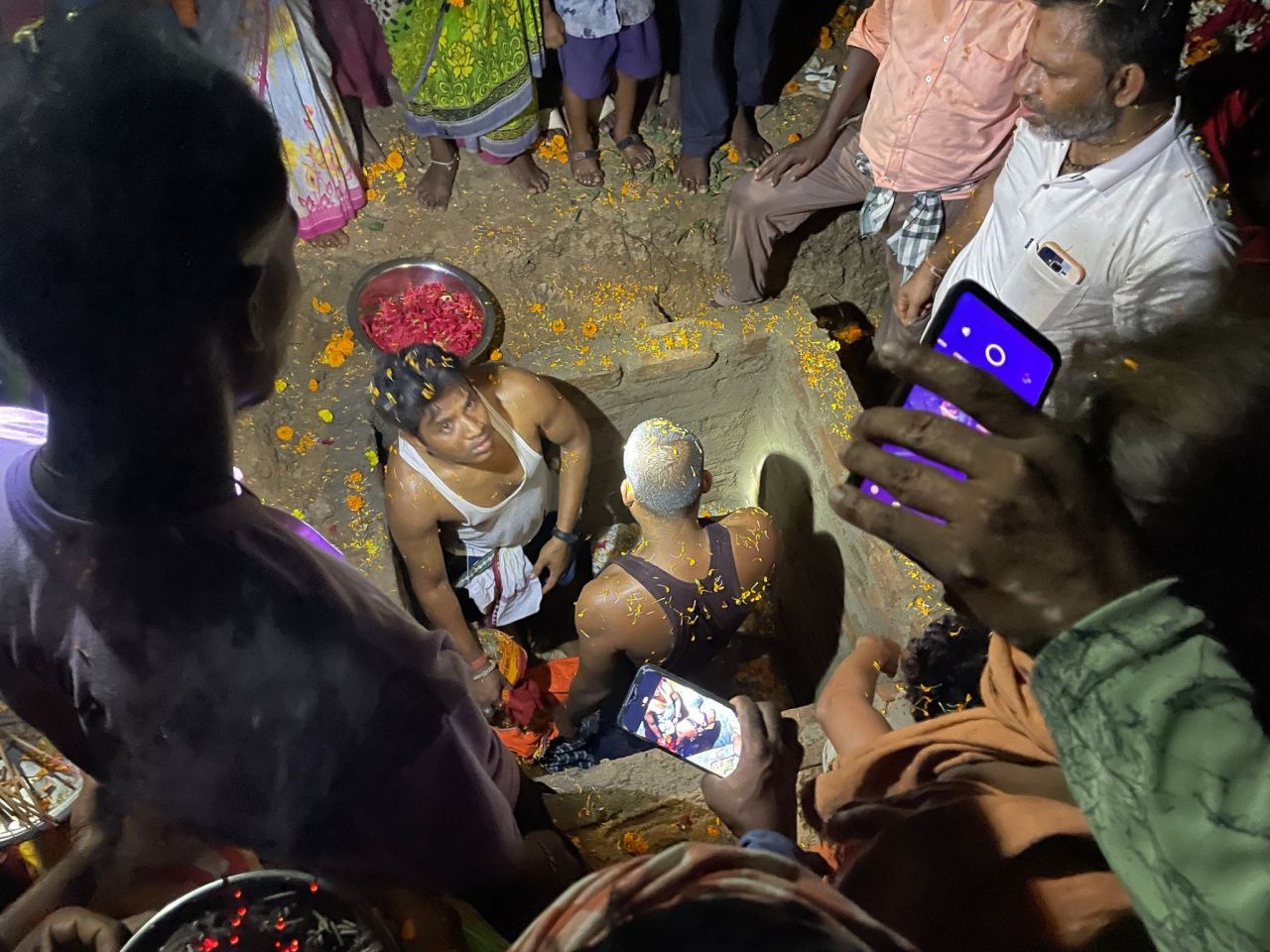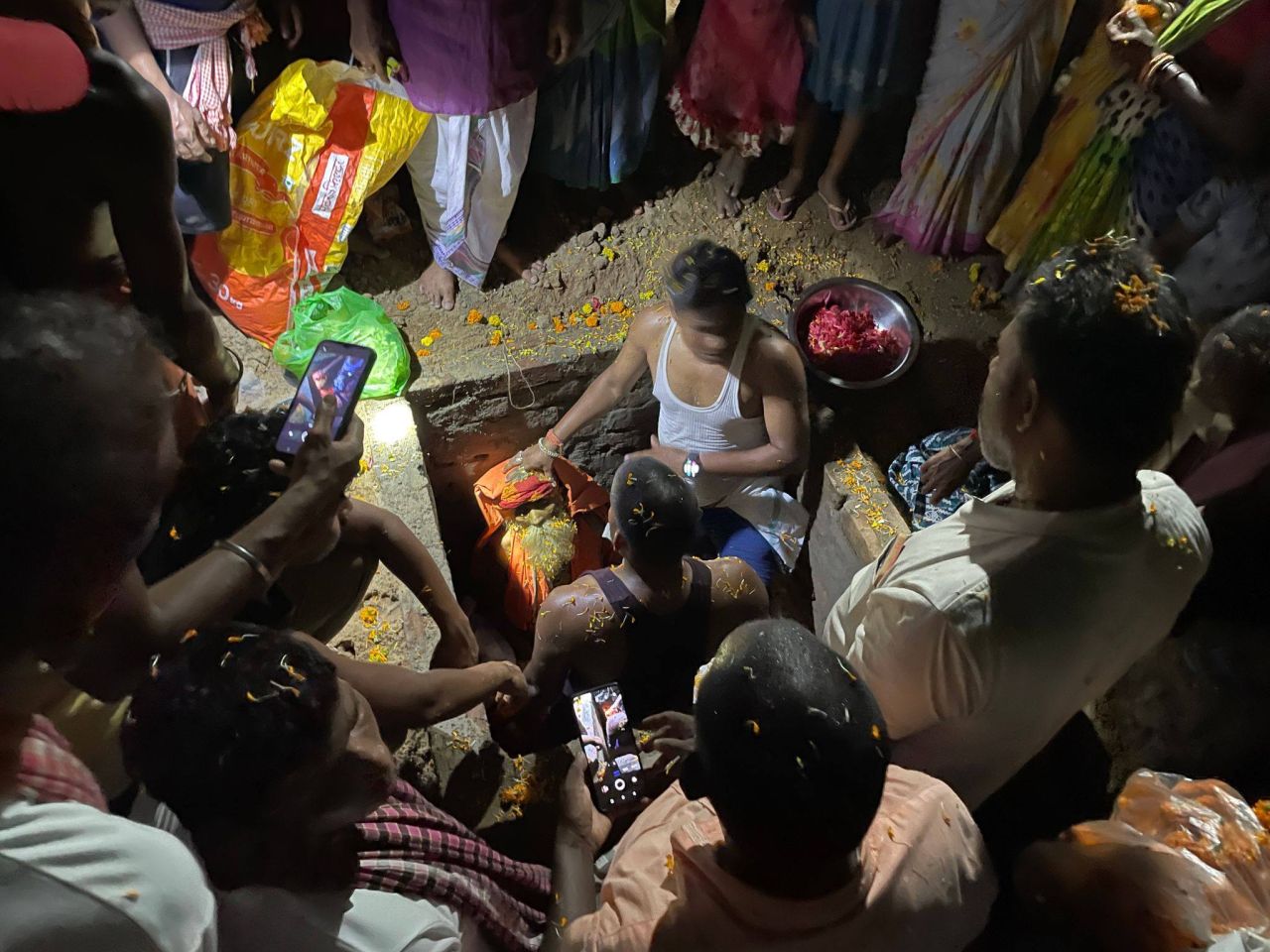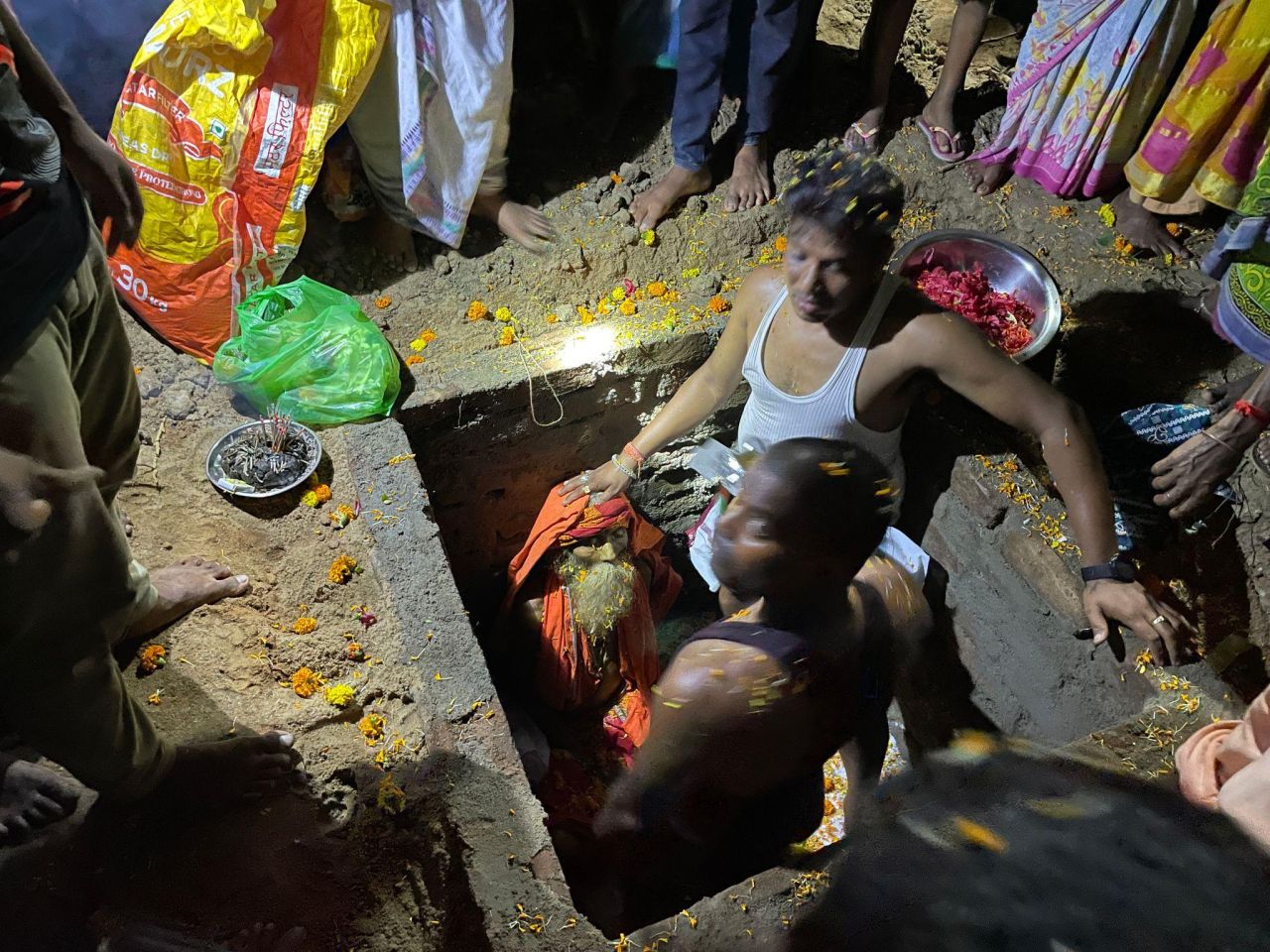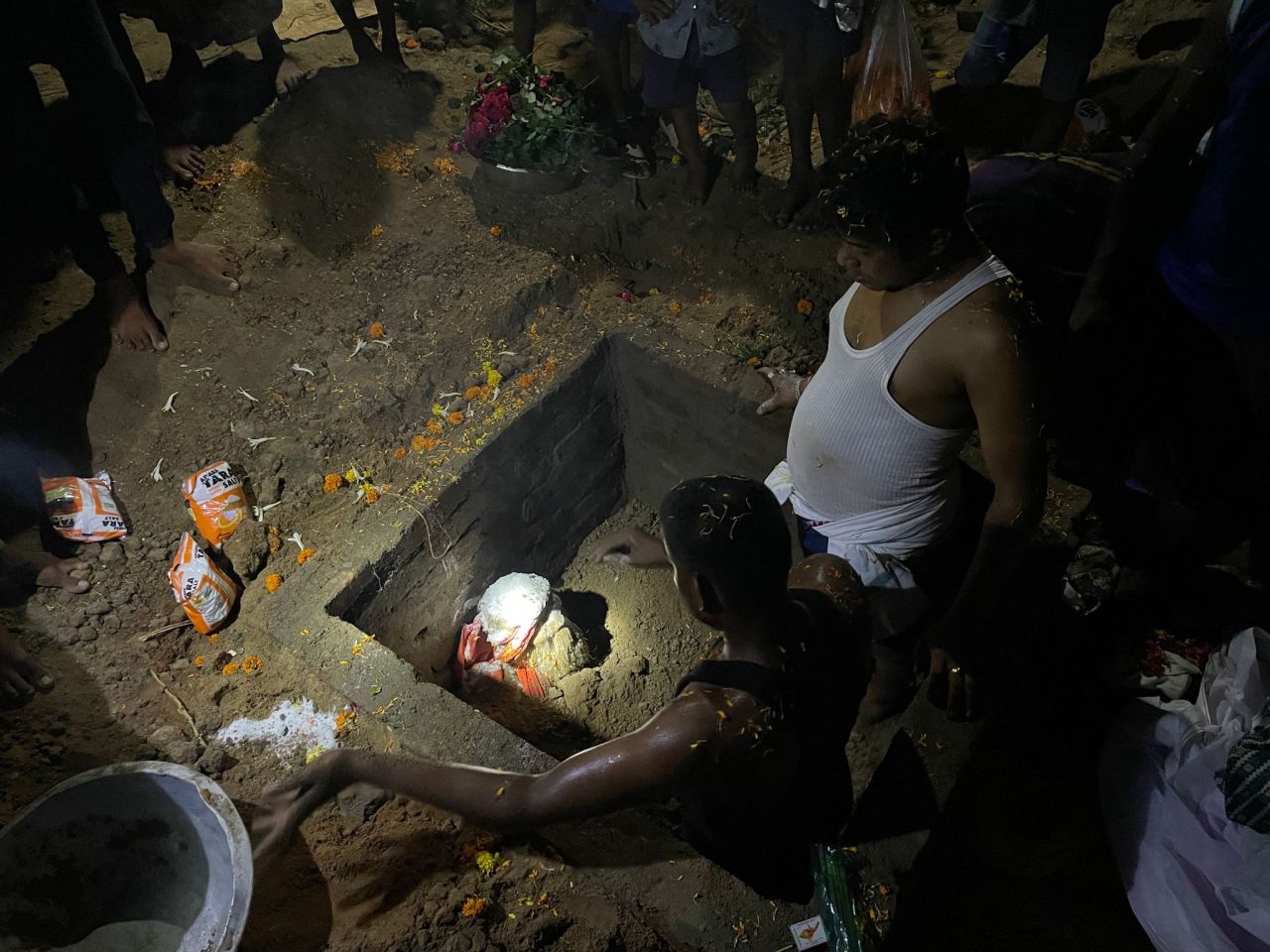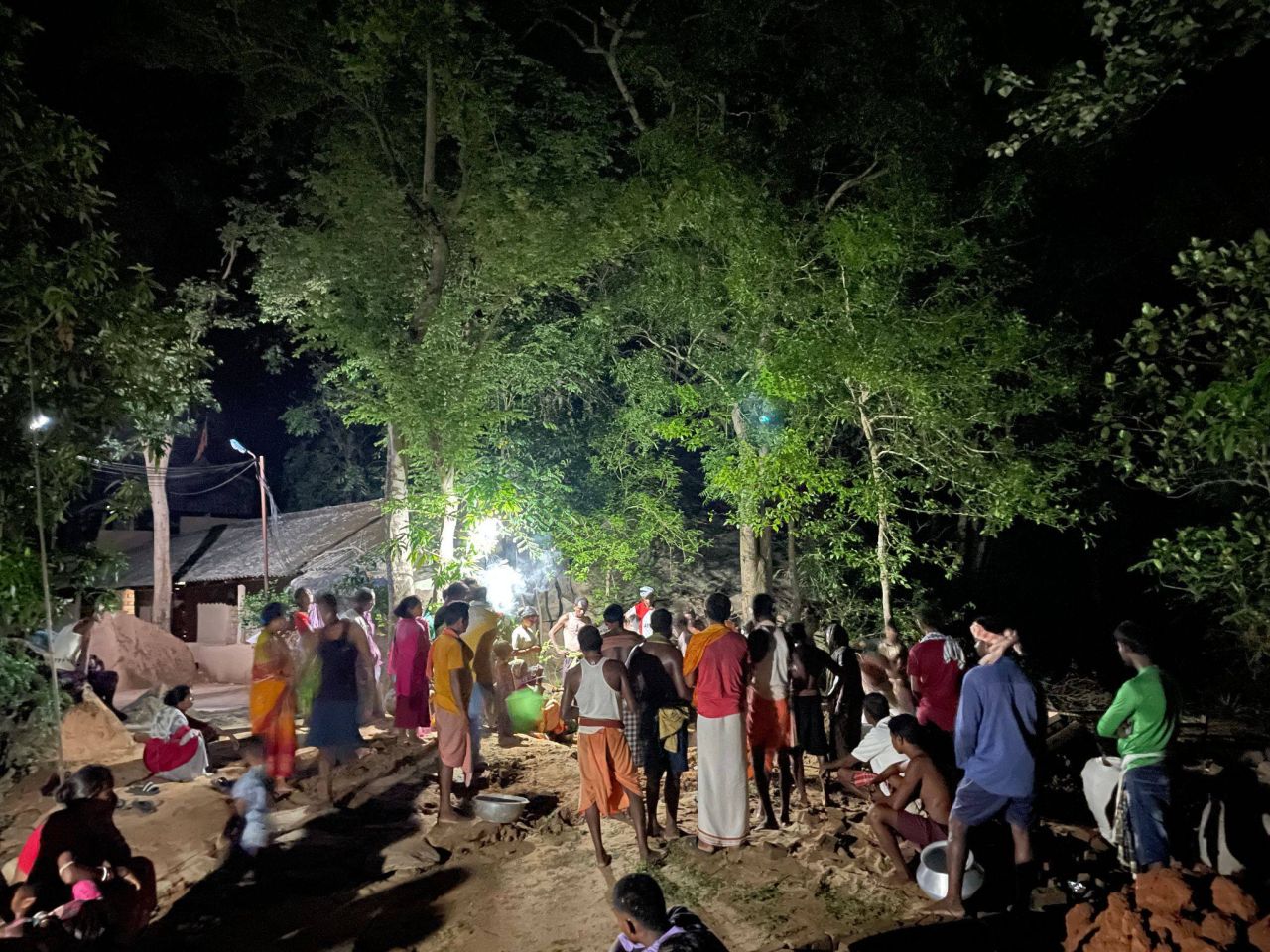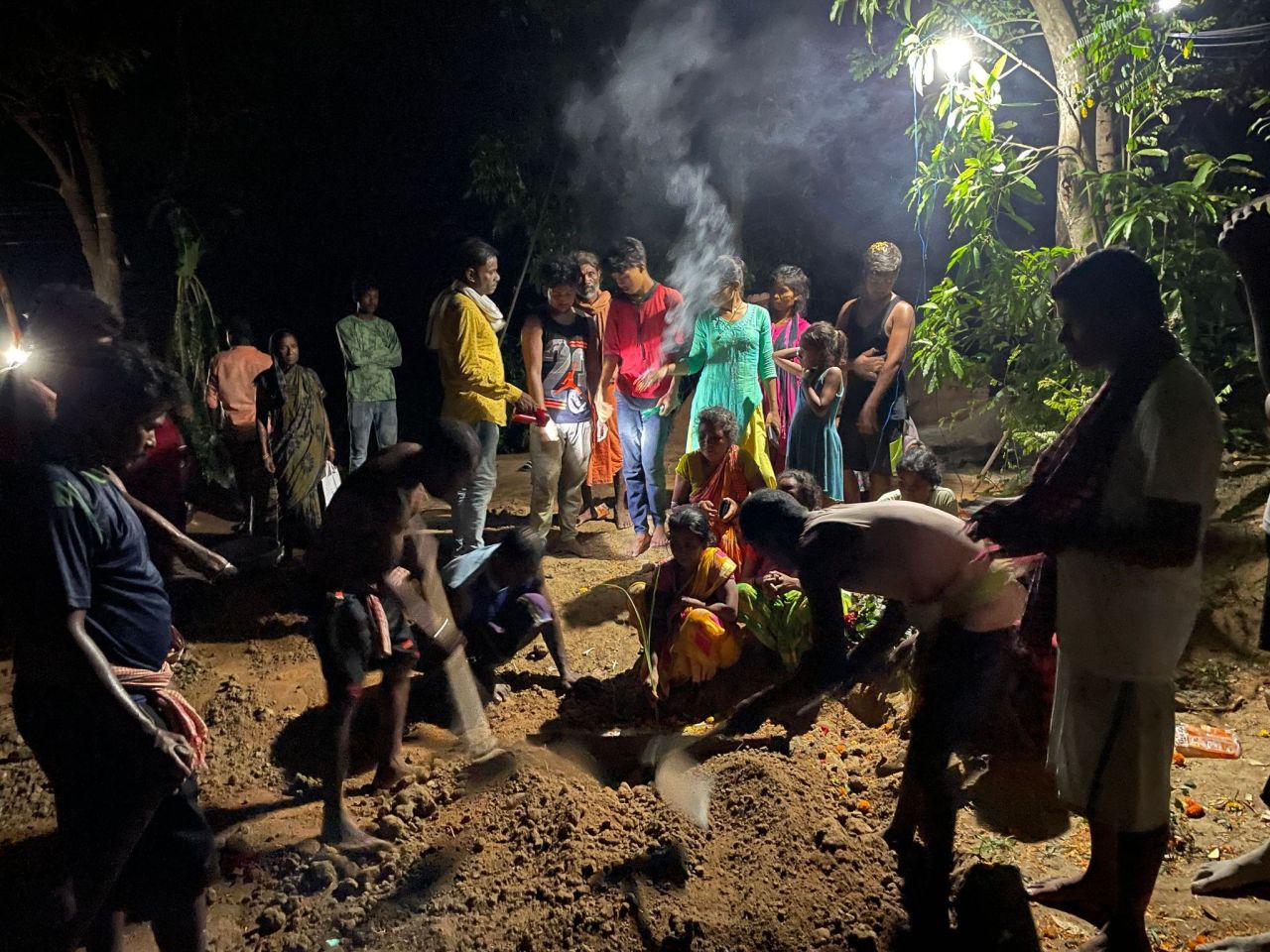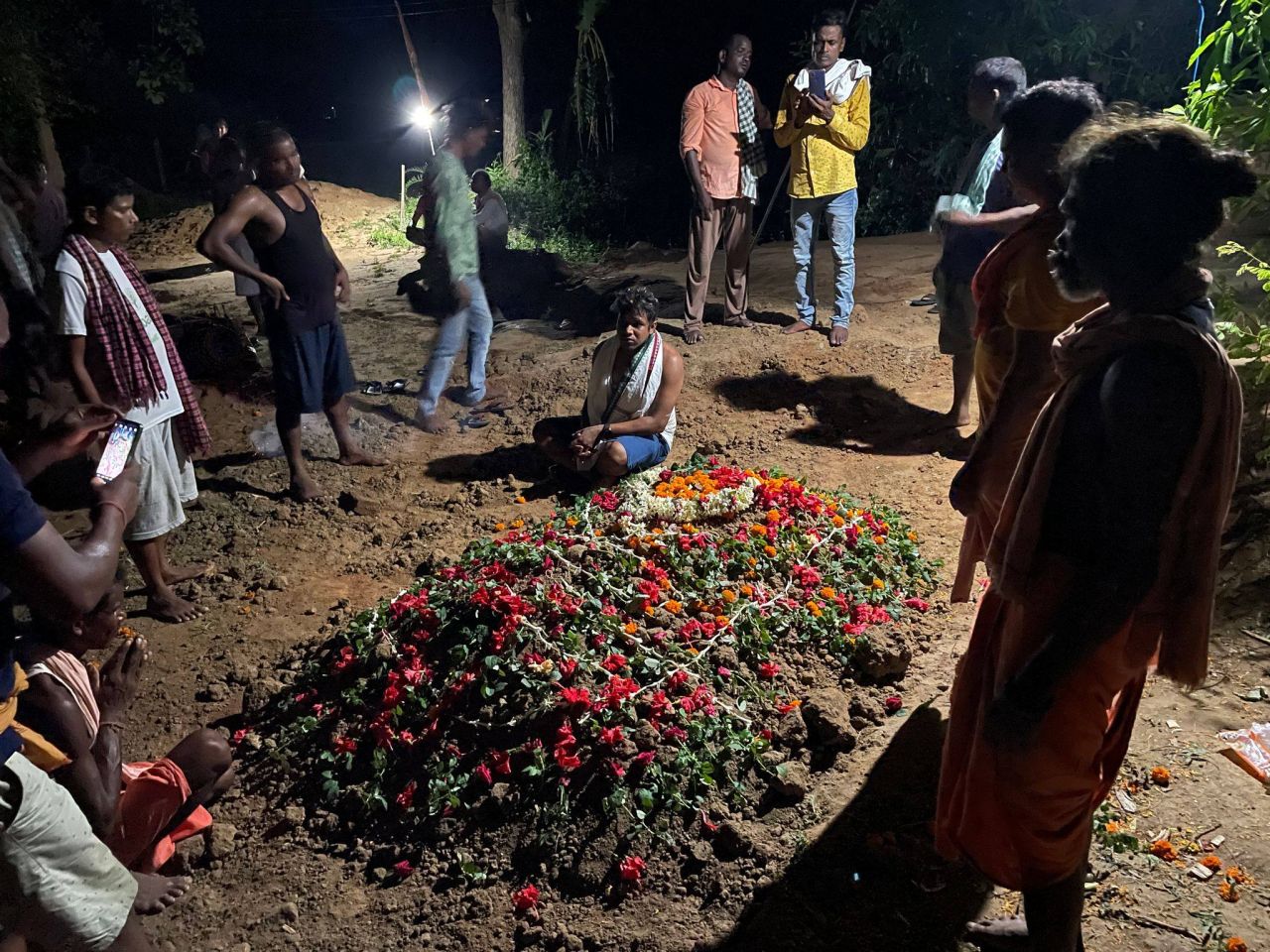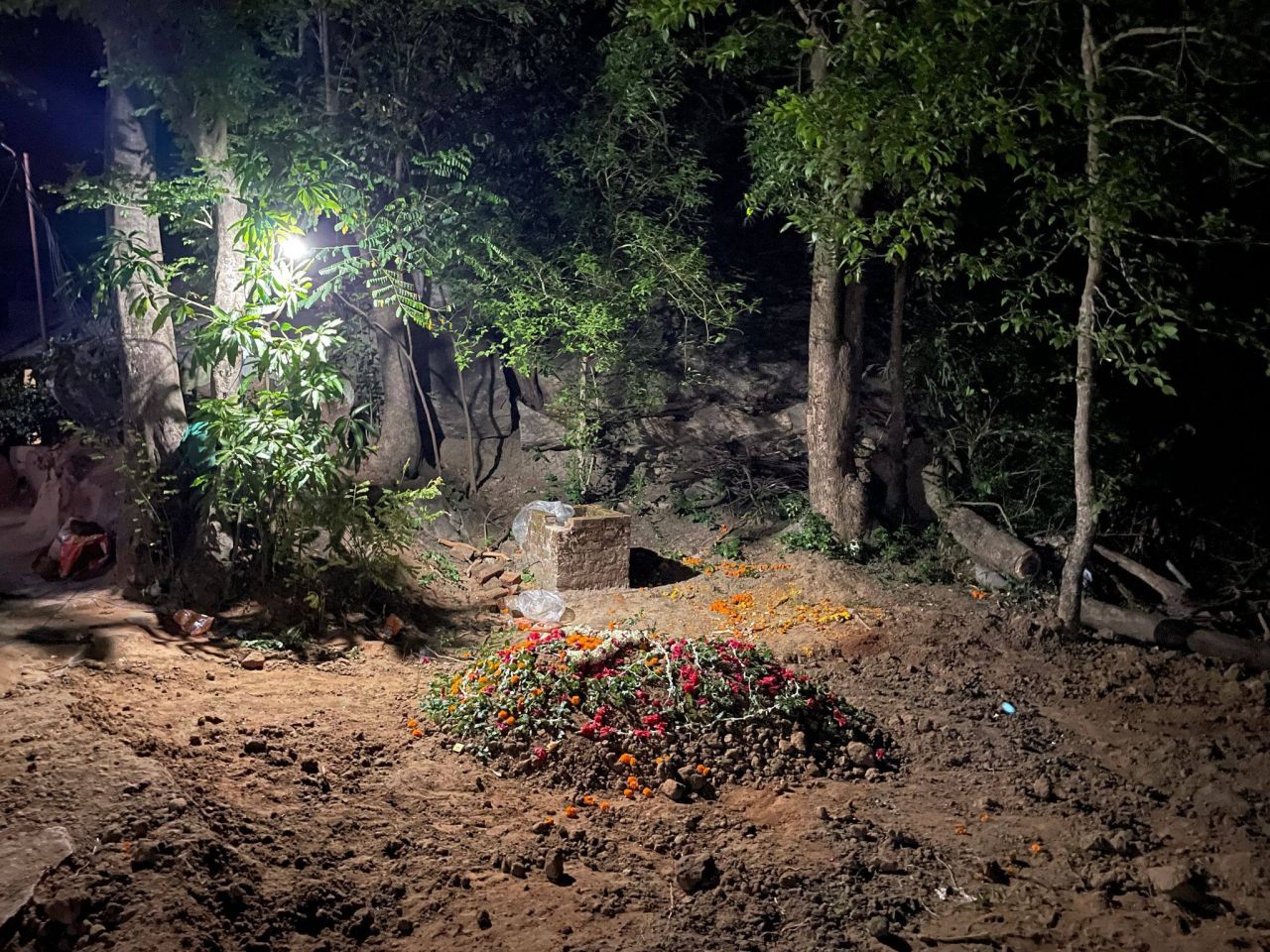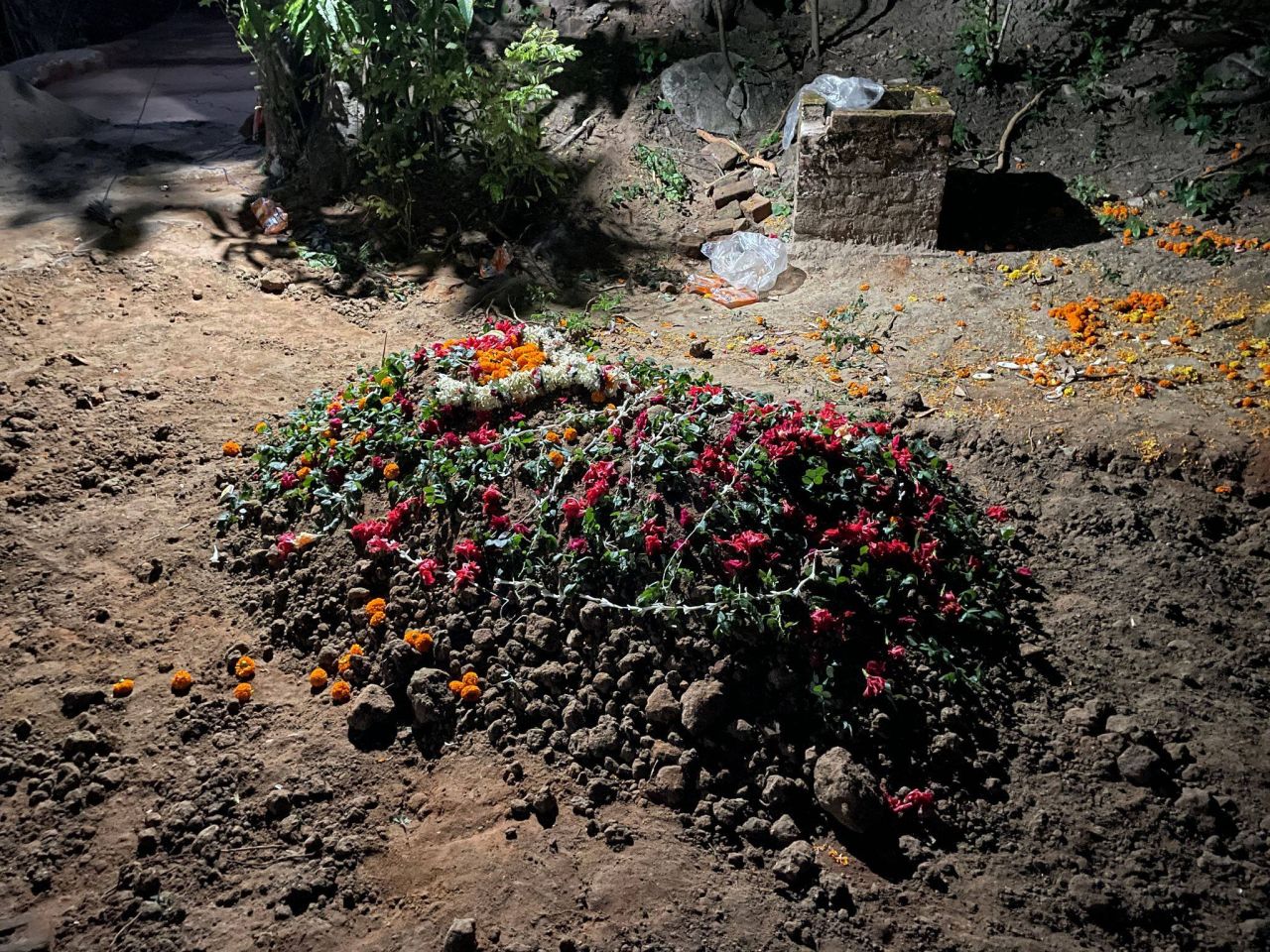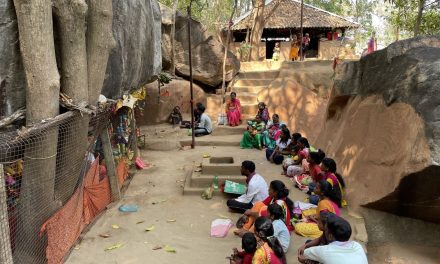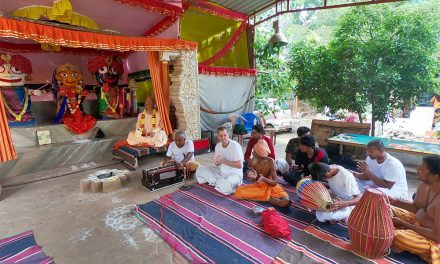Yesterday (May 28th) at 10 am one of the great hidden sadhus of Odisha left his body and was placed in samadhi at his ashram in Mayurbhanj district of Odisha. Dayalu Baba had spent many decades roaming the forests around the sacred Ratna Giri mountain in the Salandi Reserve Forest and performing severe sadhana. He was a disciple of a great local saint named Rama Baba, who’s samadhi is now located in Jharkhand.
Dayalu Baba was a treasure store of spiritual knowledge, and knew the secrets of many tirthas in this forest range which he was able to locate through inner meditation. Throughout the 17 years we knew him out of kindness and friendship he would often tell us some of the experiences he had in these forests, but would always tell us to keep them secret, as he didn’t want people to find these places and pollute them.
This forest range was visited by both Lord Ramachandra and by the Pandavas during their vanavasa periods. As a result there are many secret and forgotten tirthas hidden in this forest and on these mountains. One of the most memorable things he showed me was the original hand writing of Lord Ramachandra from Treta Yuga, which was carved into a granite boulder by Lord Rama using his arrow, which till now remains hidden deep in the forest.
The engravings were written in a script that does not exist today, and which no one can decipher. When I asked him about the meaning, he sat down and meditated for an hour, and then when he came out of his meditation he told me, “Each akshara (letter) was a personified deva. If you want to know the meaning you first need to meditate and do upasana (worship) to please each deva for each particular letter. After being pleased with your sadhana that particular deva would reveal the meaning of their own letter. Then you could move on to the next letter.” He said in this way it would take him at least a month if he wanted to get the meaning of what was written in these engravings.
On that occasion, on the way back to the ashram, he showed me a footprint in the granite mountain which was the footprint of Lord Rama, and then showed me a thickly overgrown depression in the jungle and told me in ancient times this was a small lake where Mother Sita used to take her bath. Everywhere we would wander through the forests he would point out the hidden glories of divine tirthas. No other person knew the secrets of these places like him, because nothing is recorded and they can only be seen through inner meditation.
Sometimes when walking along the Salandi riverbed, he would lead us to a remote area to show us a natural Shivalinga which he had seen in his meditation. He would describe in amazement the immense jyoti light that was emanating from them, but to our material eyes we could only see stones. He once told us that many of these stones in the Salandi river were alive, and they actually moved and walked. He said if we come back after some time we can find the same stones sitting in other places, some of the stones being gigantic and weighing hundreds of kilograms.
On some occasions the shivalingas he would see in meditation would give him instructions to perform certain yajnas, and once they were pleased by the yajnas they would tell him to carry them back to his ashram so he could worship them at his cave altar. It was amazing to see the determination he had to fulfil their instructions and then carry them back to his ashram under impossible circumstances. Some of the shivalingas weighed more than 500 kilograms, but he would plan in detail how to carry them on bamboo poles, through the thick forests for many kilometers so that he could establish their worship at his ashram.
In hindsight I wish I had documented more of my experiences with him as they happened, because they were some of the most amazing experiences I have ever had or witnessed. He had complete faith and devotion in what he was doing, and every drop of his energy was to fulfil the instructions he had been given. Maybe as I get time I will try to recollect some of them and write separate articles about them.
When living, he didn’t want people to know certain esoteric works and sadhanas he was doing, as it would pollute the environment and be a distraction to his sadhana. Because of that I tended to not write much about the activities he was doing or my experiences with him, other than some basic things about his ashram. Once one of my friends was with me when Dayalu Baba was telling something which he considered a spiritual secret about the mountain. Halfway through, he stopped, turned to both of us and said, “This person doesn’t have faith in the words of sadhus, so he should not be hearing what I am speaking. But it doesn’t matter because as soon as he leaves this place he will not remember anything I have said.” And just as he said it, it happened with the person not recalling anything that was spoken.
Dayalu Baba was one of the hardest working people I have ever met. Anytime I would show up at his ashram I would find him in the field with a digging tool doing some manual work. He was from the adivasi (tribal) community, and had amazing knowledge of forest herbs, plants, and how to live in the forest. Often as we walked through the forest he would point out some leaf or flower and start explaining how it is used as a medicine for some particular disease. If we got stuck out somewhere, he could build a small hut for shelter in 20 minutes by cutting certain vines and tree barks and tying them into a hut.
Now that he has left I can retell one small story he told me from his childhood which he kept as a secret. When telling me about this he would always speak in a whisper, as he didn’t want others to hear or know about it.
In his childhood Dayalu Baba used to roam the forests around this mountain called as Ratna Giri. When he was a child something had attracted him and spontaneously pulled him to this mountain. After roaming this mountain for many months, one day he was staring at a particular rock formation near the top of the mountain, which he later told us was known as the Saptarishi Dvara (gateway of the seven sages).
Suddenly the stone became effulgent with light and he was sucked into a portal which took him into a world inside the mountain. The inner world of that mountain was Vaikuntha Pura, and everyone had a form that looked like Narayana (sarupya mukti). Inside, the residents embraced him and said, “We are all of the same family, but in this life you have to reside outside on this mountain range. Once you have completed your duty in this life, you will again come and rejoin us.” After that he was again placed in the forest outside the mountain, and spent all his life doing sadhana at the base of that mountain. He told us that mountain was directly the form of Narayana and he would never allow us to wear shoes on the mountain. He referred to it as the virat rupa (universal form) of Narayana, which he said spanned across Odisha, with Ratna Giri mountain being the Lord’s head, and Vimala Devi in Jajpur being the Lord’s navel.
When I first met him in 2007, there were no roads to come to this place, there was no electricity in the nearby villages, and no one would ever come near this area. He had struggled alone for decades in the small ashram he had established at the base of the mountain, even though no one would ever visit or help him.
Here is something I wrote back in 2015 about the first days I met him in 2007:
At first we tried to help him by repairing the roof of the mud hut that he was staying in. Despite helping, still we didn’t understand the full extent of the poverty that he and the other sadhus staying at his ashram were going through. I didn’t understand it till a later trip.
One day we went to visit his ashram, and as is customary when visiting sadhus, we bought some simple sweets (rasagulas) in a shop to give to him. We arrived at his ashram around 2 pm and gave the sweets to him. Usually in most ashrams that we had visited, when we give the sweets the sadhus will put them on a plate, bring tea and distribute the sweets among the devotees present while drinking the tea. In this case Dayalu Baba kept the sweets to the side and only brought red tea (tea powder and water with no milk).
We all drank the red tea, but in the back of my mind I was wondering why he had not distributed the sweets we had brought. We spent the day and night with him talking various topics, then it was time to sleep. From the time that we had taken the red tea in the afternoon till the night we observed that there was no other food that any of the sadhus at the ashram took. We were feeling hungry, but for us it was only one night so we tolerated it and went to sleep. The next morning we got up and were feeling hungry, but again we saw there was no food for the sadhus and no one was eating anything. The sadhus went about doing their morning pujas and meditation without any complaint.
Finally around 11 am Dayalu Baba called us to come for breakfast. By this time it had been almost 24 hours since we had drunk the red tea the day before, and we were feeling really hungry. When we sat down, we saw him take out the simple milk sweets we had brought the day before, divide them amongst all of the sadhus present, and that was the breakfast – a few rasagulas each. Now we finally understood why he had not distributed the sweets the day before when we arrived. They had no food for the next day’s meal, so they were keeping the few sweets we had brought them for the next day.
Sometimes we take things for granted. When we see sweets we think why aren’t we eating them, why aren’t they giving them to us. We can’t understand that there are people who don’t have food for the next day, and what we think to be a snack may actually be a full meal for them – or even their entire days food. From that experience I could finally understand the poverty of their ashram, and we began thinking how to help the sadhus so that they could become self-sufficient.
Over the next 17 years we tried our best to support and develop his ashram, so the sadhus there could be free to focus on their spiritual work and sadhana. There is much more to write about Dayalu Baba, but for now this is a small introduction to what a great personality he was. It is an immeasurable loss to me that he has left this earthly realm. He was one of my true friends and wellwishers, and always thought about my spiritual welfare.


